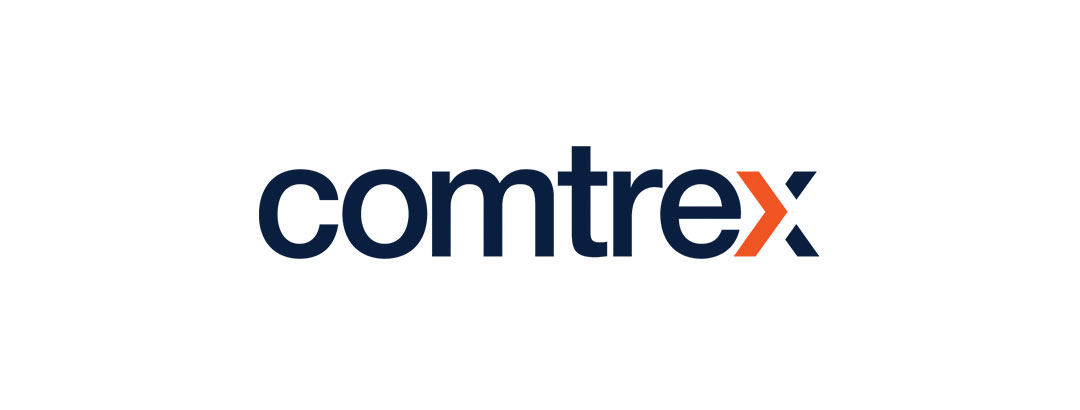
Zonal is happy to announce we are now offering two POS solutions: Aztec & Comtrex!
Aztec POS
Aztec has been a part of Zonal since 2003 and continues to move forward as our Enterprise focused solution, while Aztec can run an independent location fine, our customers were always looking for an easier to manage solution for the smaller groups and that is why we acquired Comtrex!
Comtrex POS
Comtrex is not new to the POS game but always focused on doing anything POSsible, and continues to offer features that many other POS systems can’t do today. Comtrex is great for both independents and small chains but can also hold up well as an Enterprise product too!
Contact us today to learn more about our POS options.
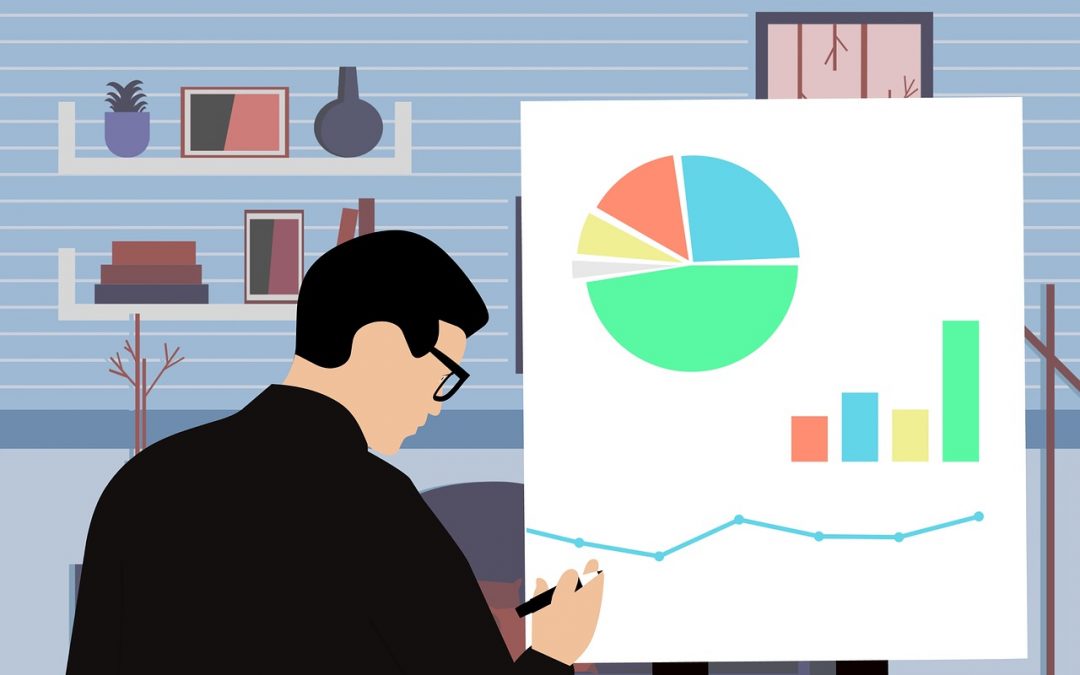
The right point of sale system makes all of the difference in your restaurant, bar, theater, or other venues. A good point of sale system offers comprehensive reporting so restaurant owners and managers can understand. It’s intuitive and user-friendly, making onboarding staff a breeze. The system should have integrated solutions like loyalty and online ordering to increase efficiency. Zonal is your one-stop-shop for all of your point of sale needs, whether you have a single location or a multi-location enterprise.
We’re offering two deals in the new year:
Try Zonal for 90 Days for Free!
We’ll let you try our point of sale system for three months with no downpayment needed! To make it even more of a no-brainer, we also work with any credit card processor to make switching even easier. Our system is easy to use; training your staff on Zonal is simple. We offer training videos and a “training mode” on our terminals so you can get familiar with our system. If you love your new system, you can pay outright, lease, or use Zonal as a Service (ZaaS).
Do you have more than 3 locations? We’ll Write Your Enterprise Software for Free
If you have multiple locations, enterprise software is a must for your point of sale system. It makes it easy to run reports on all of your locations so you can identify red flags before they become issues. You can run Zonal reports remotely and schedule them directly into your inbox so you can manage your restaurant locations from anywhere in the world. Read more about why you need enterprise reporting.
Lease Your Point of Sale System
It’s easy to go over-budget when opening a restaurant. Leasing your restaurant equipment, like your point of sale system, can help when you’re short on funds. We work with Lease Corp of America and offer two affordable leasing options. Learn more about the benefits of leasing your point of sale system.
90- Day Deferred Lease Program
You can get Zonal point of sale now, without having to make any payments for 90 days. This leasing option is excellent for restaurants, bars, and other venues that need to conserve capital and let the POS system pay for itself through ROI. The application and approval process through LCA is simple. The finance installation and training costs are bundled together in one lease. You will have the option to own the system at the end of the lease. You may even be eligible for special tax savings under IRS Section 179.
99$/Month for the First SIX Months
You can pay off your Zonal point of sale over an affordable 60-month leasing term through Lease Corporation of America. The first six payments will be just $99, for extra affordability. The credit turnaround time is only 2 to 4 hours so that you can have your point of sale system up and running as soon as possible. If you want a shorter lease term, there are 36 and 48-month terms available as well. It’s application-only up to $150,000.
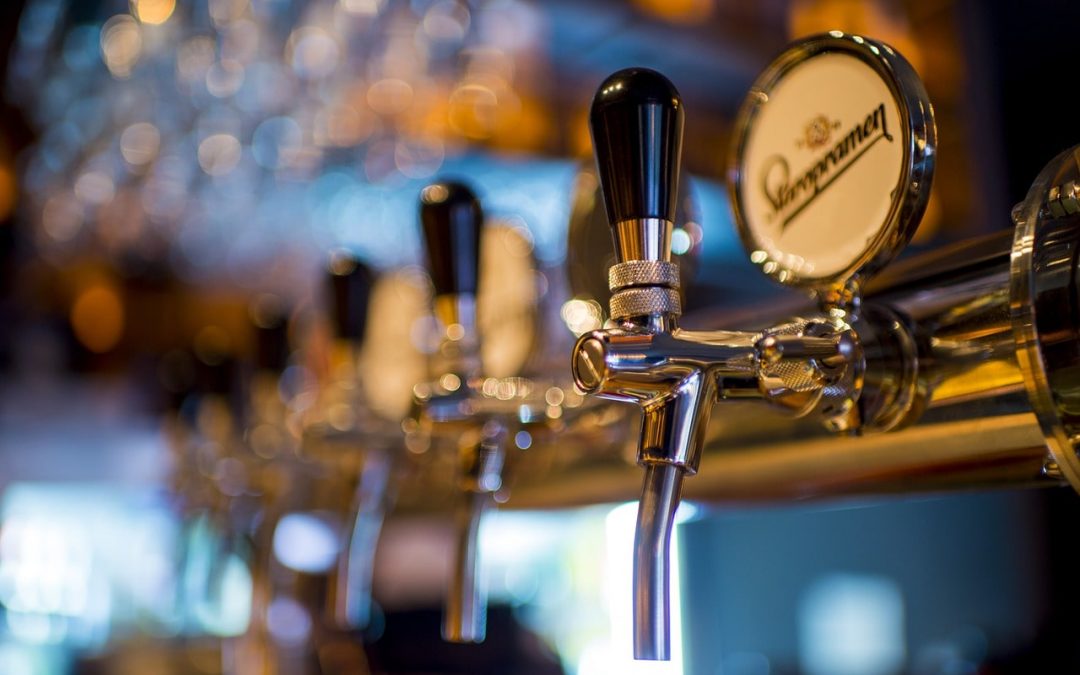
Breweries are popping up left and right, especially in Orlando and the Central Florida area. According to The Brewer’s Association, there are over 1.7 breweries ber capita in Florida. It’s important to choose the right point of sale system for your brewery to help your establishment run smoothly and make the most out of your customer data. Breweries and bars often have different needs when it comes to a point of sale system compared to a restaurant. Learn more about the best point of sale features for your brewery or bar.
User-Friendly
A good brewery point of sale system is quick and user-friendly. Bars and breweries need to run efficiently, being able to take orders conversationally, keeping up with the customers. Compared to a fine dining or sit-down restaurant, the ordering speed is much faster at a brewery or bar. It’s important to have a system that is easy to use, making new employee training easy and fast.
Happy Hour
Point of sale systems for breweries should have quick and easy promotions like happy hour or two-for-one specials. Ever wanted to run a special but dreaded trying to add it to your point of sale system? Customizable promotions make it easy to set your own beer and alcohol specials to bring in new customers and keep current customers happy.
Food and Drink
Many breweries offer food in addition to craft brews. Your point of sale system should be able to handle food as well as drinks. Even if you don’t offer food now, you may want to have that option in the future.
Inventory Management
The best brewery point of sale systems have comprehensive reporting features and inventory management. It’s important to know which beers are selling the best, so you can keep the customer favorites in stock and increase your profit margins. Know when it’s time to restock so you never run out of inventory. Reporting tools let you take control of your business and make educated decisions about scheduling, pricing, and profits. Are your promotions worthwhile? Do you schedule your employees smartly? Schedule your reports and have them sent to your inbox so you can keep track of your business remotely.
Handheld POS for Breweries
If your bartenders are mobile and take orders at tables, handheld tablet point of sale systems increase order accuracy and speed. Tablets allow your bartenders to take orders on the go, so they don’t have to write them down or try to memorize them. They can instantly place an order and have it ready faster than if they had to share a terminal with other bartenders. Zonal handheld tables are designed to withstand the wear and tear of the brewery and bar industry.
Customizability
A good bar and brewery point of sale system should be easily customizable with easy updates. Add your special brews and customize your offerings so your bartenders can quickly input orders. Speed and accuracy are important for a brewery.
Split Checks
Customers can be difficult, and large parties may want to split the checks in different ways. Your brewery point of sale system should be able to split checks by item, seat, name, or amount.
Security
During happy hour and other busy times, it can get quite hectic in a popular brewery or bar. Security is important to protect profits and inventory. Your point of sale system should be able to set security parameters based on job type, time of day, and function. Does an expensive bottle of wine need a manager’s approval? Set it up on your POS.
Integrated Solutions
The best brewery and bar point of sale systems have integrated solutions like loyalty, online ordering, gift cards, and kitchen display systems to help your business run smoothly.
Loyalty
A good brewery loyalty system offers customizable rewards based on unique customer spending habits. The loyalty app should use your brewery’s branding and send customers notifications through SMS, email, and push notifications to increase customer spending and visit frequency.
Online Ordering
If your brewery or bar is a restaurant as well, a good online ordering system makes it easy for customers to place to-go or delivery orders. When you have your own online ordering platform (app or website) instead of using a third party like UberEats you don’t have to pay a commission on your sales and have complete control over your online ordering strategy.
Digital Signage
Paper menus don’t make sense for many bars and breweries, as the drink menu offerings change daily or weekly and paper menus tend to get torn or wet. Digital signage lets you create a digital menu board and make real-time changes to your menu based on what beers and drinks you offer each day and any specials. Smart features allow you to also show live TV, social media feeds, weather, YouTube, and commercials.
Zonal point of sale is great for breweries and bars in Orlando and all over the country. Our system is easily customizable for your business, has comprehensive reporting and inventory management features, and has integrated solutions that help your brewery or bar run smoothly. The right point of sale for your brewery or bar is essential, helping bartenders to input orders efficiently while making the most out of your customer data. If your interested in getting a point of sale system for your brewery, learn more about Zonal point of sale.
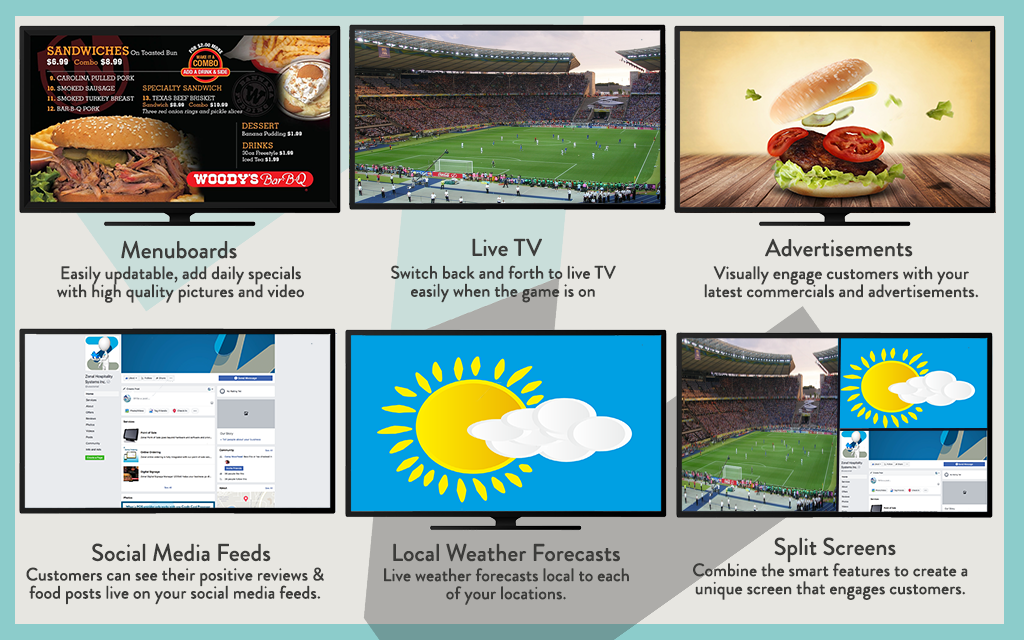
Digital signage is a great customer engagement tool for restaurants. Most quick service, fast-casual, sports bars, family-style, and other non-fine dining restaurants have TVs for customer entertainment. Digital signage turns those TVs into a visual resource with smart features that grab the customer’s attention in a new and interesting way. Read more about the benefits of restaurant digital signage.
What is Digital Signage?
Digital signage is a digital display that businesses in the hospitality industry use for menu boards and other types of content. With digital signage, one TV screen does what takes multiple paper menus, posters, and flyers. The TV can still have the game on and easily switch back and forth between live TV and custom content in just seconds.
Benefits Restaurant Digital Signage
Customer Engagement
People enjoy visuals, especially when it comes to food. A picture of a mouthwatering entree is more engaging and sells better than the best-written description. Menuboards take the place of traditional paper menus and give customers HD images of the food. Digital signage is easy to update, so you can highlight specials or run promotions on the signage rather than print out a separate menu. According to Digital Signage Today, “seven in 10 customers purchasing a product or service because a sign caught their eye, digital signage at the till point is a perfect place to influence customer behavior and drive upsells.” Customers are more likely to add on to their order when they see delicious photos of sides and desserts.
Entertain Customers
Digital signage is convenient for restaurants, allowing for real-time updates through the digital signage manager. It also is entertaining to customers, with fun smart features like social media that allow customers to interact with the brand and post their pictures and comments and see them appear on the digital signage’s social media feed. According to a study “84 percent of shoppers indicate that watching content on digital displays helps the time pass more quickly.” A major benefit of restaurant digital signage is making the waiting times seem shorter and more enjoyable with fun content. Waiting in line turns into an opportunity to build the brand and increase sales.
Save Money
Printing paper is expensive. Digital signage helps restaurants reduce their costs by eliminating the need for paper menus, special menus, and paper advertisements. Any standard TV can turn into digital signage with smart features using Zonal. You can even open your restaurant up to paid advertisements from other brands.
Control Multiple TVs
The Zonal Digital Signage manager web interface allows you to control and customize the content across all of your digital signage platforms, even in different locations. You can create and schedule content playlists for each digital signage from the ZDSM.
Zonal Digital Signage Smart Features:
The benefits of restaurant digital signage go beyond menu boards. Smart features help increase customer engagement. You can run your restaurant’s commercials or live chat with customers.
Smart Features:
Menus– Feature daily specials with crisp images and videos to boost sales.Advertisements- Visually engage customers with your latest commercials and advertisements.
Live Chat– Customers can interact with staff and each other creating a fun and open environment
Weather– Live weather forecasts local to each location.
Social Media Feeds- Customers can see their positive reviews and food posts live on your social media feeds.
RSS Feeds– Really Simple Syndication allows you to create custom news feeds that update constantly. Enter your own message and have it scroll the feed.
Stocks– Customize a live scrolling vertical or horizontal stock ticker with today’s highs, lows, or percentage change. Make your own stock scenes or create your own.
Live TV- Integrate live TV using HD analog or digital input.
Catalog– Display thousands of product images and descriptions using animation and custom content. Set up takes minutes and when integrated with the Kiosk Builder, customers can interact with product lists.
Camera– Photos can be integrated realtime into your digital signage presentations. You can use Android or IPad tablets.
Date & Time– Customize date and time using fonts (over 700 to choose from), colors, and date/time formats so it looks perfect!
HTML5– HTML5 takes animation and Ajax to the net level. Build animated clips or a full animated kiosk and run it seamlessly across all SignagePlayers. It runs on Android and iOS tablets.
Flash– Run any Flash powered SWF, it can be built on Adobe or a 3rd party Flash generator. Bring your signage to live with animation.
YouTube– YouTube has an endless supply of free content to keep customers engaged with entertaining content.
Google – Integrate your Google Plus, Calendar, and Chrome accounts. Host your files on Google Drive and access them remotely.
News Feed– Digg creates one single feed of current news to keep your audience glued to the screens!
PDF– Upload any PDF document to your screens. Save Microsoft Excel and Word docs as PDFs to display as well. PDFs automatically resize to fit any size screen.
QR Codes– Generate QR codes to be scanned by customers for more information or to take them to another website.
Countdown – Integrate your Google Plus, Calendar, and Chrome accounts. Host your files on Google Drive and access them remotely. Perfect for holidays and special events!
Remote Events– Create a limitless number of digital signage applications controlled by a simple Javascript client. Examples include Queuing (when a customer stands in line and picks up a number to be served), Scoreboard (what you would see in a basketball or Beer Pong tournament), and even a Teller director.
There are many benefits of restaurant digital signage from menu boards to running commercials. Zonal digital signage turns any standard TV into digital signage and the Digital Signage Manager has exciting smart features to increase customer engagement and entertainment. Control your digital signages from the easy-to-use web interface across different locations. Digital signage is a modern way to improve customer experience, naturally upsell, and keep your customers wanting more. Learn more about Zonal digital signage.

Point of sale systems are a must today. Few businesses can survive being cash only, not accepting card and EMV payments. More customers than ever are foregoing cash and just carrying their cards. Only accepting cash puts you at a disadvantage from your competitors. Opening a restaurant is expensive, and in the beginning restaurants, bars, stadiums, theaters, etc. have different budgetary restraints and it can take time to recoup the initial costs of opening. Even existing restaurants may be intimidated by the cost of switching from a cash register or outdated point of sale system, even though it will increase profits dramatically over time, it traditionally takes an initial investment. Leasing a point of sale system is a great option for restaurants and other food and drink venues that are on a strict budget.
In order to take your customer’s orders and process the payments, you need a point of sale system. Often when you’re a new restaurant on the scene, you need the customer’s payments to be able to afford the point of sale system (if your budget has run out and you’ve hit a cash flow problem). This can put restaurant owners in a stressful situation, which leasing can solve.
Why Lease?
Opening a restaurant, bar, etc. is expensive. There are lots of expenses to account for before the doors even open. Your venue has recurring monthly costs before your first customer walks through the door. Resources start to drain, and the point of sale system often becomes an afterthought, but it’s super essential for the success of a restaurant. Customers may not give your new place a second chance if it disappoints the first time. A great point of sale system is easy to use and increases efficiency from the servers to the kitchen. Existing restaurants can also find themselves strapped for capital and need a flexible payment option to get a new point of sale system.
Reduce Upfront Costs
One of the biggest concerns with a point of sale system is the upfront cost. Chains and established restaurants are more likely to have the capital to purchase their point of sale system. They expect to be in businesses and use their system for the next couple of years, so buying makes sense. New restaurants do not always have the budget to purchase their system outright or pay a higher monthly cost. Leasing allows these restaurant owners to finance their point of sale system, with a lower upfront cost, and a reduced monthly payment spread out over a specified period of time.
Zonal’s Partnership Leasing Corporation of America
In order to help new restaurants and venues with a strict budget, we partnered with the Leasing Corporation of America to offer Zonal point of sale through an affordable leasing option. Out point of sale solutions can be purchased outright or through Zonal as a Service (ZaaS). Leasing Corporation of America has been in the leasing business since 1988 and has built a trustworthy reputation. We knew they would be the perfect partner with us.
90-Day Deferred Lease
If you really need a point of sale now but do not have the capital to pay for it yet, you can get Zonal through the LCA and defer payments for 90 days. This leasing options allow you to start taking customers and making money. The money your Zonal POS makes is a great ROI; it pays for itself through use. The finance installation and training costs are put together in one lease. At the end of your lease, there is a 1$ purchase option so that you can own your system.
$99 Payments for the First Six Months
You can lease Zonal point of sale over a 60-month term through LCA. The first six payments will only be $99 to give you time to increase your cash flow using Zonal POS. If you would like more flexibility, there’s also 36 and 48-month terms available. You also have the $1 purchase option at the end of the lease.
Think leasing might be the right move for your business? You can go to https://mylease.leasecorp.com/zonalusa to get a price quote and apply now.
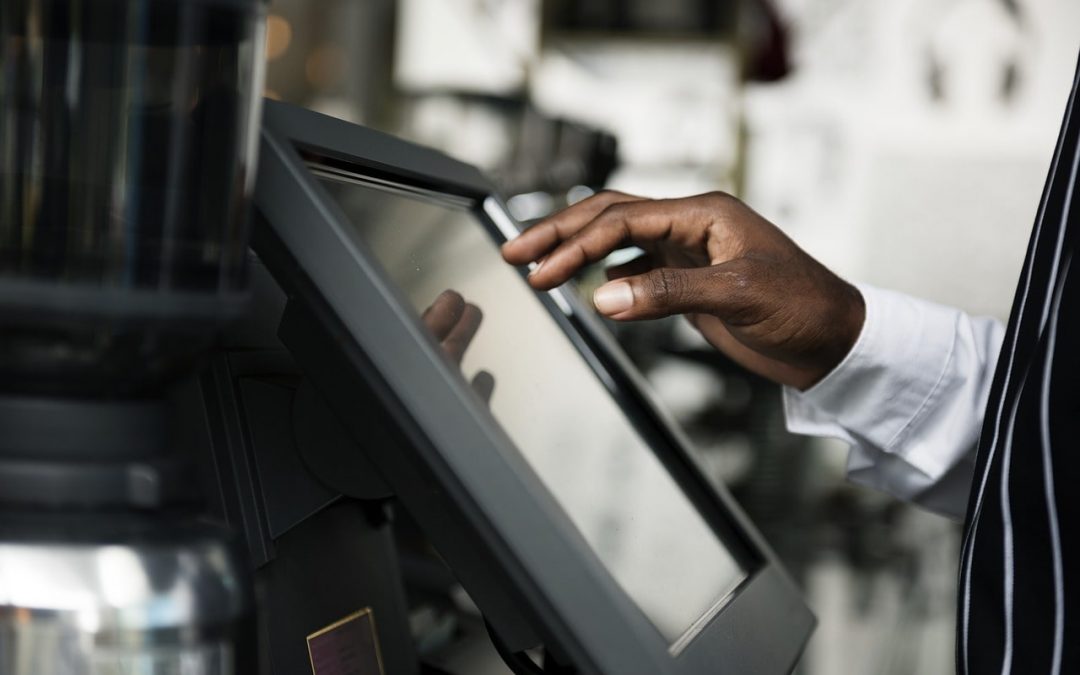
As a restaurant owner or manager, the goal is high volume, high retention, and high spending. You want to attract as many customers as possible and provide them with an excellent experience so they will keep coming back. When customers are in your restaurant, you want them to spend as much as possible. Servers train to upsell, while the marketing and loyalty programs encourage spending with rewards and coupons. Learn how to increase average customer spending in your restaurant.
Digital Signage
People are incredibly visual; we love to see pictures. We eat with our eyes first, then the stomach. You can use the preference for visuals over words to increase sales using digital signage. Digital signage allows restaurants to use high-quality images on their menus. You can even incorporate smart features and integrate videos and other advertisements.
Would you rather read about a fantastic sandwich or see a high definition picture of one? A digital menu board trades wordy descriptions for mouthwatering imagines to naturally upsell customers. Digital Signage increases sales by 31.8 percent. You can use any standard TV and turn it into a menu board and use different smart features like social media feeds. It’s super easy, all you have to do is plug in the small device to the TV’s USB port, and then you can manage your content from your computer.
Loyalty Programs
The best restaurant loyalty program naturally incentivizes customers to increase their check size by offering rewards and coupons once milestones are hit. Not all loyalty programs are created equal. Your loyalty program should be customizable, so it harmonizes with your brand from your logo to your color scheme. Loyalty programs can also be great for customer communication. You can send your customers text, email, or push notifications with different coupons, offers, or specials. Zonal creates customized and affordable loyalty apps that send targeted rewards to customers based on their spending habits. Our loyalty programs also integrate with our online ordering platform for a seamless experience.
Should a customer who spends 10 dollars a month receive the same as a customer who spends 50 dollars a week? No, the customer who comes in less frequently should be encouraged to increase visits while the customer who visits frequently should be prompted to increase their spending.
Online Ordering Platform
Customers spend more when using an easy online ordering platform compared to having to call in an order. When customers have to place an order over the phone they often feel rushed, do not always have the menu in front of them, are unaware of specials, and may even have to be put on hold if you’re short staffed. An online ordering platform makes the process simple. Customers can place orders, enter coupons, connect their loyalty account, and check out all through the platform.
An effective online ordering platform allows restaurants to customize their merchant page, so it matches their branding, uses pictures, and is easily updated. Customers who go to an online ordering page that is easy to navigate, feels like an extension of the restaurant, and has excellent HD pictures will have higher spending. Zonal’s online ordering platform is not only easy to update and customize but is also affordable. When you choose a custom online ordering platform, you do not have to sacrifice up to 30 percent of each transaction as you would with a service like UberEats or Grubhub.
Innovative Specials
Limited-edition specials are a natural way to increase spending, by enticing customers with higher-priced menu items that are only available for a short amount of time. The limited-edition aspect gives customers the fear of mission out. The special may be 10 dollars more than what they were ordering, but it will soon be gone and what if it’s incredible and they never got to try it? They are more likely to splurge as feel it’s a “one-time thing.”
Social Media Presence
Social media is vital for restaurants as many customers check Facebook, Instagram, and Twitter when deciding where and what to eat. Your social media pages should be full of high resolution, delicious pictures of menu items and happy customers. Social media is a great way to connect with customers, listening to what they have to say and adjusting your business accordingly. You can push specials, coupons, and other offers on your social media pages to drive business and sales.
Comprehensive Reporting
A comprehensive reporting system can tell what menu items sell the best and which sell the worst. Knowing the stats of your offerings helps you not run out of customer favorites and gives you the opportunity to replace any poor performing menu offerings.
Free Samples
People love free, and if you give them just a taste of something delicious, it will leave them wanting for more. Sample appetizers and desserts to boost customer spending. Many people opt-out of an appetizer or a dessert to try to save money, but if they have a taste of your dessert and it’s fantastic, they’ll have to have it. You can also sample alcohol, or offer flights of beer or wine instead of just glasses for a higher price. Customers like variety and being able to try new things without the commitment of purchasing a full size.
Alcohol Pairing
A sneaky way to increase sales is to suggest wine, beer, or cocktails with different menu items. Customers can be overwhelmed with alcoholic offerings or decide to skip a beverage, but if you recommend a specific drink with their entree on the menu or through the server, it increases sales. The customer feels that they are missing out on the full experience by foregoing the alcohol that was specially selected to pair best with the meal.
Wouldn’t you love to increase each of your customer’s spending? Obviously! There is an entire industry designed to improve customer retention and spending. You can use these little tricks to upsell your customers and get them to spend more with each visit. It’s more efficient to focus on the customers you already have, increasing their visits and encouraging them to have check sizes than it is to find new customers. Customer loyalty is key to a successful business.
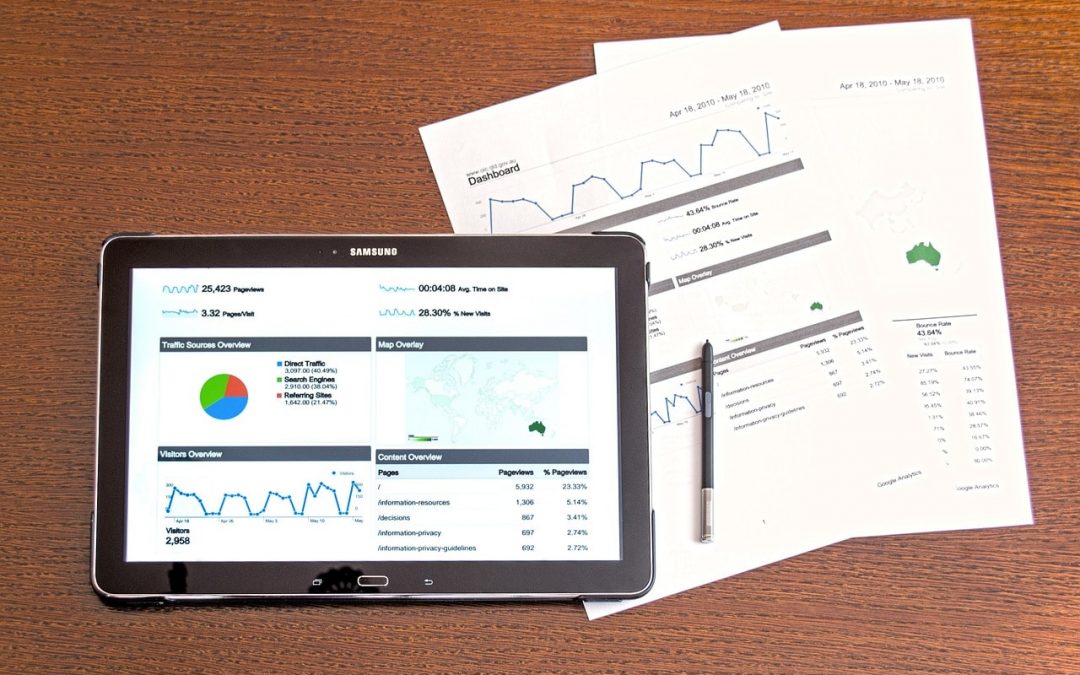
Enterprise software allows restaurant owners and managers to oversee all locations in a single simple interface. You can run reports from all locations or view each location individually. If you have multiple locations, you can easily lose sight of each individual business, only seeing the red flags when it is too late. Reporting gives you actionable insights so you can make each location as profitable as possible. Learn how enterprise software can help your growing restaurant enterprise.
1. Off-Site Management
You can’t be in multiple places at one time; it’s just not possible. Your time is valuable, which is why enterprise software allows you to remotely run reports. You can make one location your main “office” or view these reports from your home or anywhere with wifi. Sometimes you aren’t alerted by management about a problem until it’s too late. Control your point of sale systems from a single interface to set floor plans, products, promotions, and specials.
You can customize and automate your reports to make sure you are regularly checking up on your business. You can run reports at the site or enterprise-level. Find out what is going on by terminal, profit center, site region, and corporate entity. Your reports can be sent directly to your inbox daily, so no matter where you or what you’re doing, you are given the data you need to make sure everything is on track. You can have these reports automatically sent to your other partners, keeping everyone in the loop.
2. Inventory Control
Managing your inventory is extremely important for profits. Our enterprise software uses the first in first out principle (FIFO) to make sure costs are as accurate as possible. You are also provided with detailed ingredient and product information. There are different inventory levels so you can allow external audit supervision. You can also run live product audits to make sure you’re getting accurate numbers for each and every product.
3. Pricing Flexibility
Locations may have different pricing and product offerings. You can control pricing on an individual site level or through all locations with price banding. Make sure your pricing is accurate by setting price control by location, region, company, or create your own custom grouping. When combined with the enterprise promotion wizard, you have complete pricing control over each individual location.
4. Task Management
Use the electric manager’s journal for task management. You are given enterprise-level monitoring that integrates with the POS and mobile devices to make sure each task is being completed. You can be alerted when tasks are completed (or not completed)
5. Employee Management
A big part of your restaurant is its employees. You can create multiple jobs, security levels, and pay rates that integrate with fast and accord record keeping. No matter how many terminals or locations you have, you’ll be provided with accurate employee data. This data gives you extensive scheduling options and can forecast labor costs.
The more locations you have, the harder it can be to keep track of data if you do not have enterprise software integrated with your point of sale system. Enterprise reporting allows you to see data from individual locations or multiple locations so you understand what business is looking like from every angle. You are able to see if there is anything out of the ordinary so you can make sure each location is running properly. You can’t be at every location, every day, but this software is the next best thing. Enterprise software makes sure the numbers never catch you by surprise.
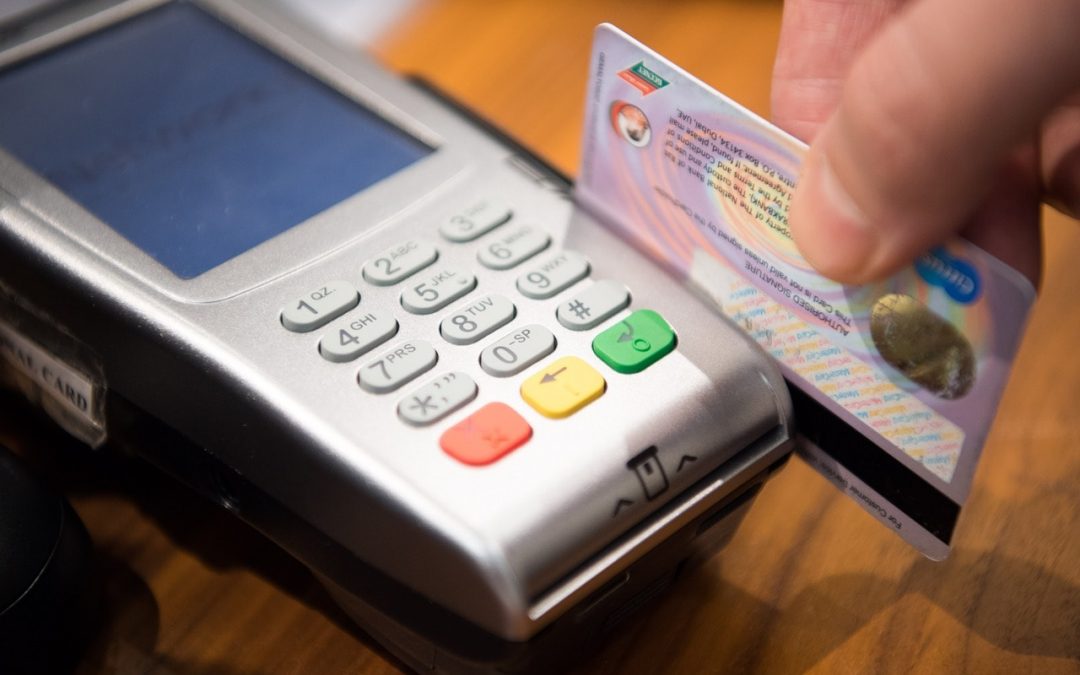
T-Mobile has a great commercial, with the punchline “that’s your standard fee…fee” pointing out the hidden costs associated with changing cell phone plans. Choosing a point of sale from the wrong company can feel like buying a new phone. The advertised price looks great, then when you checkout and get your first bill, suddenly the price has increased dramatically. There is a frustrating amount of fees and you’re now stuck in a contract that is expensive and hard to break.
Customer Deception
If a deal is too good to be true, it usually is. Many point of sale providers advertise and quote prices that seem great at first until you read some of the fine print or hit with unspoken, after-the-fact fees. One of the big tricks they have up their sleeve is credit card processing.
Many point of sale companies require customers to use their credit card processor as a way to make money. They sign exclusive contracts with these companies or are even owned by them. When you’re shopping around for a new point of sale system, the quote you see is not always the real cost after switching over to their credit card processor.
How Point of Sale Intersects with Credit Card Processing
Point of sale systems facilitate transactions, but in order to accept more than just cash, you need to work with a credit card processor. The credit card companies (Visa, MasterCard, American Express, etc.) have an interchange rate or a per transaction charge, for processing their payments. As a business, you can not accept the payments yourself and pay the fee. Credit card processors act as the middleman, and make their money by charging their own fee on top of the fee from the credit card companies.
There are less and less cash-only businesses as card-based payments have become the new standard. Some states even allow businesses to be credit/debit only and not accept cash to speed up the transactions. It is typically in the best interest of most businesses to accept credit cards and pay for a credit card processor.
Losing Your Power
Not all credit card processors are created equal, their fees and rates differ dramatically. If you’re forced into choosing a credit card processor because of your point of sale system, you lose the ability to shop around and find the best rates. The credit card companies that work with these contracted point of sale systems know this and can charge more as a result.
Many of these companies offer point of sale and payment processing all in one, just charging a percentage of each transaction and/or a monthly fee. The more you make, the more they make. Some companies charge almost 4 percent of EACH transaction! If your business is making $25,000 in profits, the point of sale company takes $938 (for a 3.75 percent fee) and you still had to purchase/lease the POS software (which is usually an overpriced tablet without the necessary peripherals).
Your Fee…Fee
There are many different pricing strategies, combining flat monthly fees, per transaction fees, or percentage fees based on sales. If you’re working on a tight bottom line, these extra fees and increase prices can affect your business. Until you hit a certain benchmark, you may not even be aware of the extra fees. The “lower” cost of the point of sale system becomes expensive. Some of these hidden fees are cancellation fees (from your old credit card processor), activation fees, service fees, transaction fees and statement fees. Some processors are also faster than others at delivering your funds, which affects your cash flow.
Contracts
Unless you have a background in law, these contracts are very hard to understand. Many credit card processors create complex pricing models and make it very difficult to find out how much you’ll actually be paying. The initial quote may look great on paper, but you’ll notice a difference in your sales versus your funds
These credit card processors also have strict cancellation fees are incentivized to automatically renew contracts without notice. You receive no phone call, email, or other notification of the upcoming renewal date. If you swipe a credit card on or after this date, you’ve just renewed your contract and will suffer penalties for breaking. You become stuck in a cycle with a credit card processor that is hurting your bottom line but is too expensive to cancel AND it’s tied with your point of sale system, which you need to do business.
The Zonal Difference
Zonal works with any credit card processor. We don’t care who you use, if you’re happy, we’re happy. If you like your credit card processor, why should you have to pay to break a contract and start a new one? We don’t aim to make money by signing a contract with a processor and forcing customers to switch over. You should be able to choose your own processor so you can negotiate the lowest rates possible and maximize your profits. We want you to succeed and expand (hopefully enough to open more locations) and staying a part of the Zonal family, that’s how we make our money. We value honesty and transparency; we are partners, not just a provider.
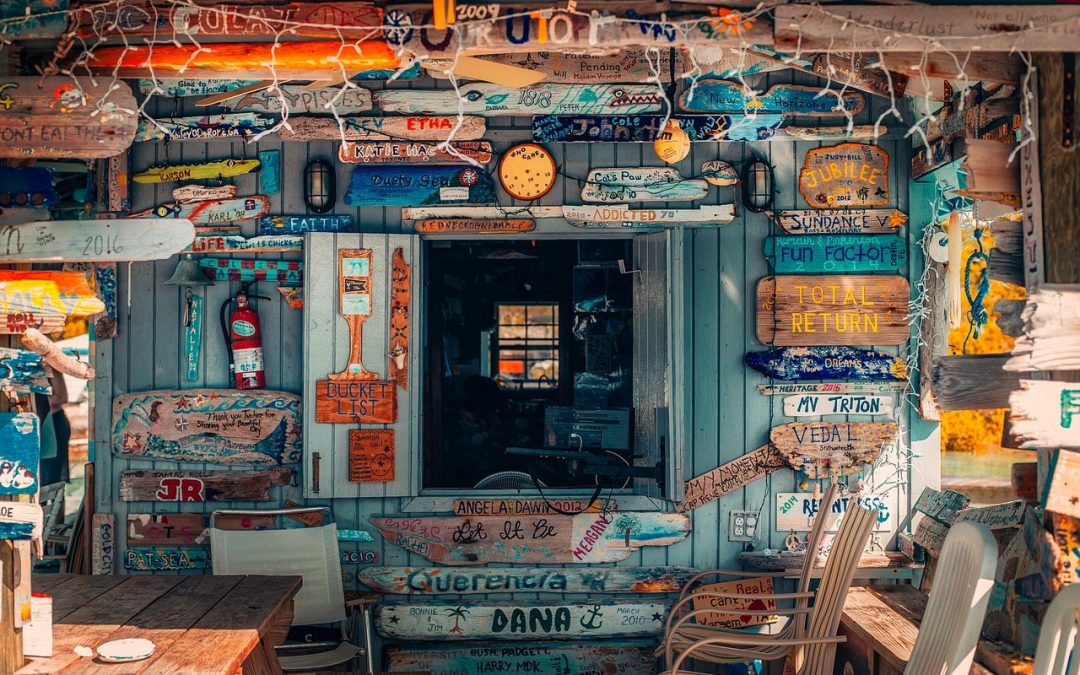
Restaurants open and close for many reasons. A restaurant can be opened by a businessman or women that can’t boil an egg, but be incredibly successful. A restaurant can also be opened by the greatest chef in the world and fail. Your restaurant is more than a business, it’s more than the food: it’s a brand. Customers come for the food AND the experience. Whether it’s a single location or a huge enterprise, a successful restaurant has branding.
What is Restaurant Branding?
Restaurant branding is your unique angle to your customers. Why should they choose you over a competitor? Your branding helps them know what to expect. Each decision made becomes a puzzle piece, with the finished puzzle creating the brand. The branding becomes the menu design, the lighting used, the server’s outfits, the drinks, the tables, the chairs, the social media feeds,and the music played. All of these pieces create the brand.
How to Build a Brand
In order to create a restaurant brand, you have to think about what makes your restaurant, cafe, bar, bakery, etc. unique. Look at it from the customer’s perspective. Branding starts long before the door is opened. Think about the messaging your customers are seeing when they drive by, the signage, the advertisements, the social media posts. These are their first impressions of who you are as a brand.
Today people expect a lot out of a business, particularly restaurants. Customers are looking for emotional attachment, they want to feel a connection towards your business, understanding its personality and using it as a reflection of who they are.
Know Who You Are
Imagine your restaurant is a person and ask yourself these questions:
- What do they look like?
- How do they walk and how do they talk?
- What are their interests?
- Who are they as a person?
- How do they walk?
- What are their favorite foods?
- What do they do in their spare time?
Each decision you make should reflect this personality, as it will attract your ideal audience. When you add specials, decor, or even employees that clash with your brand, you’re hurting your business.
Know Your Angle
Successful restaurants have a “sell.” They have their angles and know who they are. Customers know what to expect and have certain standards towards the particular restaurant. The restaurant fulfills a specific need in the marketplace. The restaurant could be similar to a competitor but has some distinct difference. There is a reason someone would choose one over the other.
If you go to buy a bottled water, you may be overwhelmed by the choices you have. Each product is actually very similar, but the branding is very different. When you choose Fiji over Dasani, you’re choosing water over water. It’s the same product, but the brand is very different. You’re buying the brand.
Restaurant Example
A “local” restaurant that focuses on using locally sourced ingredients is going to want to focus on their angle: local. It’s not just about the food, this “local” theme should spread to every aspect of the restaurant to create a strong brand message. You can use the theme to help every piece of the puzzle be “on brand.” If a piece clashes, it chips away at the authenticity. It goes down to the bathroom decor, the straws, the napkins, the menus, coupons, specials, each of these aspects flows around local sourcing. Each piece doesn’t have to actually be locally sourced, just complementing the theme.
What Can You Do?
Tell a Story
Does your restaurant have a unique backstory? Tell your customers! It will help them gain a better sense of who you are. Let them know if you use your grandmother’s recipe or if a dish was nspired by a trip to Japan in college. Your story helps personify your restaurant, creating its own image and entity. Your restaurant is more than the food and infrastructure, it’s a feeling and an experience.
Attract the Foodies
What makes your food special? Is it the spices, the sourcing, the quality? How did you come up with a recipe? Your food and drinks are the core product of your restaurant, it’s important that the brand fits.
You want to offer a simple pasta with a plain red tomato sauce.You can put it on the menu as:
- Spaghetti
- Pasta al Pomodoro
- Spaghetti Monster
- Pastabilities
- Nonna Rosa’s Pasta
Each one of these names tells a different story and offers different branding. The dishes are all the same, but the branding behind them is different. The pasta will have a different feel depending on presentation to the customer. Does it come out in fancy china, an art deco square bowl, something mismatched, or sustainable bamboo? Even the smallest choices are part of your brand image and can help or hurt it.
Create the Atmosphere
Pretend you’re a customer walking through the doors. What do you see? Observe the music, the sounds of the employees, and the smells of the kitchen. Listen to the music, be mindful of how it would make you feel. A nicely dressed host can bring you to a neatly decorated table, or maybe you seat yourself at a reclaimed wood communal table and grab a paper DIY menu to circle what you want to order.
An enterprise restaurant has the opportunity to choose localization or standardization. Each location can be unique, offering different menu items and decor, or no matter what location you go to, it is exactly the same. Both angles have their own advantages and disadvantages.
Brand Awareness
Social Media & SWAG & Events
Spread the word about your restaurant, bar, cafe, bakery, but make sure all of your messages are on-brand. You social media posts should reflect your brand, using the same tone as your restaurant would if it were a person. Know your audience and post to them.
Hats, t-shirts, koozies, magnets, stickers, etc. are great ways to help spread the word. If you have a great logo, paint the town with it. SWAG is great for building relationships with customers, giving them a reason to think about you.
Your restaurant is a business and it is a brand. The food and customer experience work together to give your customers a view of who your restaurant is. Make sure your customers know what to expect each visit, know what you are offering. Your brand is what sets you apart from your competition. Do you have the best burger in town? Do you brew your own beer? All of your decisions work to build this image which will attract and build a relationship with your customers.
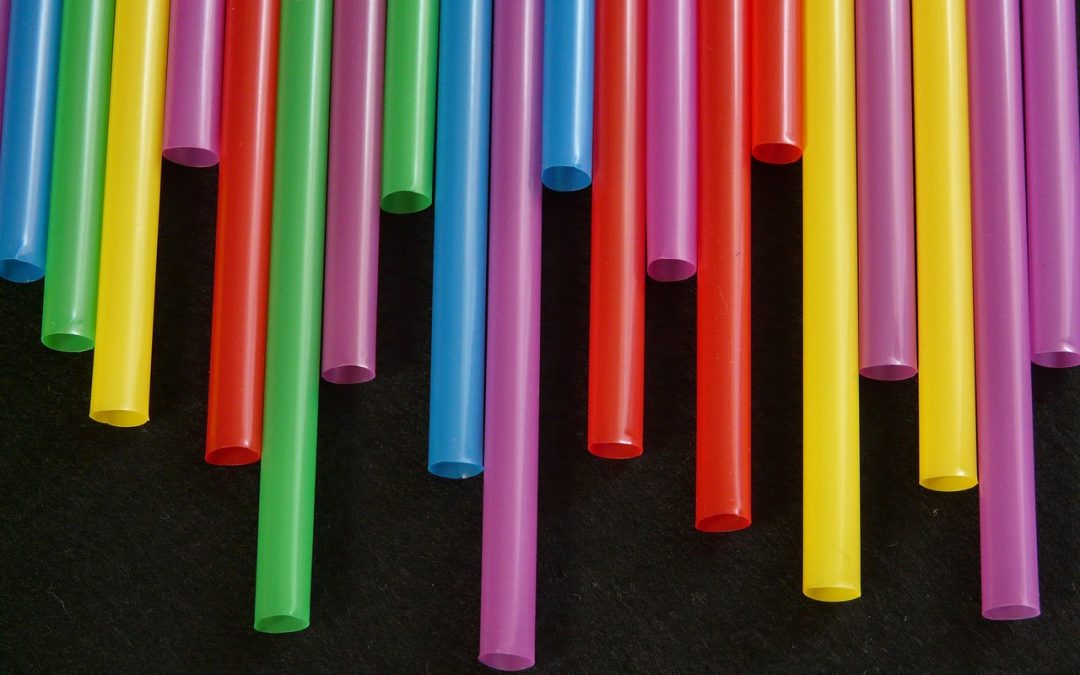
The list of cities that are banning plastic straws is growing, and many restaurants, bars, and cafes are going straw-free voluntarily. Why straw free? How to make your restaurant straw-free? What’s wrong with straws? Here’s everything you need to know about the latest eco-trend and figure out whether or not your restaurant should jump on board.
Single-use plastics are a big part of the hospitality industry, particularly in food service. Customers are automatically given straws with their beverages and leftovers and to-go meals are typically served in plastic or styrofoam. Straws, Styrofoam, other plastics end up as pollution, often in the ocean.
Why straw-free?
Some people need straws for medical reasons and it’s easier for children, but most people use straws out of habit. Americans use an estimated 500 million drinking straws every day! Straws are small and light, easily blown away by the wind. Most recycling facilities do not accept straws, so they either end up as pollution or landfill. Biodegradable straws aren’t much better, just a more expensive option.
When straws and other plastics find their way into the ocean, they end up as pollution. They take years and years to break down (450 years for each plastic bottle), instead finding their way into the stomachs of marine animals and fish. As they do breakdown, they become micro plastics, which are small and easily ingested by fish. The fish can not break them down, so it stays in their system. When we eat these fish, we are consuming micro-plastic.
Going straw-free may seem like a small step in the grand scheme of things, but the small steps can lead to bigger ones. You can start by just asking customers if they would like a straw before handing it out. The National Park Service found that 50 to 80 percent of people will say to a straw if you ask! You can save money while cutting back on plastic use it’s a win-win.
Straw Alternatives
If your customers do demand a straw (which is less than 50 percent) you can offer them a paper one or get creative. By only giving straws to customers that ask for one, it offsets the higher cost of paper straws. The straws don’t have to be paper. There are metal reusable straws, bamboo, and even edible straws made out of Twizzlers or cookies (great for speciality drinks and milkshakes). Even large corporations like McDonalds are making the switch. McDonald’s will start replacing plastic straws with paper ones in the U.K, which is currently 1300 locations.
Be Part of the Change (or Not)
You can use this as a new business strategy to shift towards more sustainable practices. If you’re a farm-to-table restaurant it makes sense to try to be as environmentally friendly as possible. Being eco-minded can appeal to customers, particularly a younger demographic. You don’t have to broadcast your changes, if it doesn’t flow with your customer mindset. You can start slowly phases out straws and even single use plastics without your customers even noticing.
Could Your City Be Next?
Many cities, and even some countries, are taking a stance against single-use plastics. Straws are an easy place to start and help customers and businesses become less dependent on plastic. You can get ahead of the game if you see that your city is trending towards sustainability.
- California: Malibu, Davis, San Luis Obispo
- Florida: Miami Beach, Fort Myers
- Washington: Seattle
The European Union is looking to ban straws and other single-use plastics across its 27 countries by 2030. Countries like France, the UK, and Canada are also reducing their use of single-use plastic usage.
What about Styrofoam?
Styrofoam is often used for delivery and to-go orders. It is a single-used plastic that isn’t currently recyclable. It also breaks down into smaller pieces, which are often ingested by animals and sea-life. It’s becoming banned in more and more cities due to it’s affect on the environment.
- New York: New York City, other cities
- Maryland: Takoma Park
- Washington: Seattle
- Florida: Miami Beach
- Maine: Portland, Freeport
- Massachusetts: Nantucket
- Minnesota: Minneapolis
- Oregon: Portland, other cities
- California: Los Angeles, San Francisco
What Can You Do Today
- Ask customers if they would like a straw, or start serving drinks without them and wait for customers to ask for one.
- As you start to make a dent on your straw supplies, look for alternatives like paper or bamboo straws.
- Consider phasing out your Styrofoam and plastic to-go containers and look for a sustainable alliterative like paper.
- Give customers paper bags to carry their meals in, instead of a single-use plastic one.
- Ask customers if they would like utensils in their takeout or delivery meal, if they’re going to eat at home they probably don’t need it!
- Give customers discounts if they bring their own cups for coffee or a smoothie
Your city may be the next to crack down on straws, you can be a head of the game! The small steps you take can help reduce your restaurant’s plastic use. You may even find you save money in the long-run by making these little changes. You can show customers your business cares about sustainability, and make it part of your branding and appeal to a younger demographic. If sustainability isn’t a part of your marketing or image, you can slowly make these changes so the customers become use to your new changes. Little steps towards sustainability may seem small, but they can help reduce plastic use.
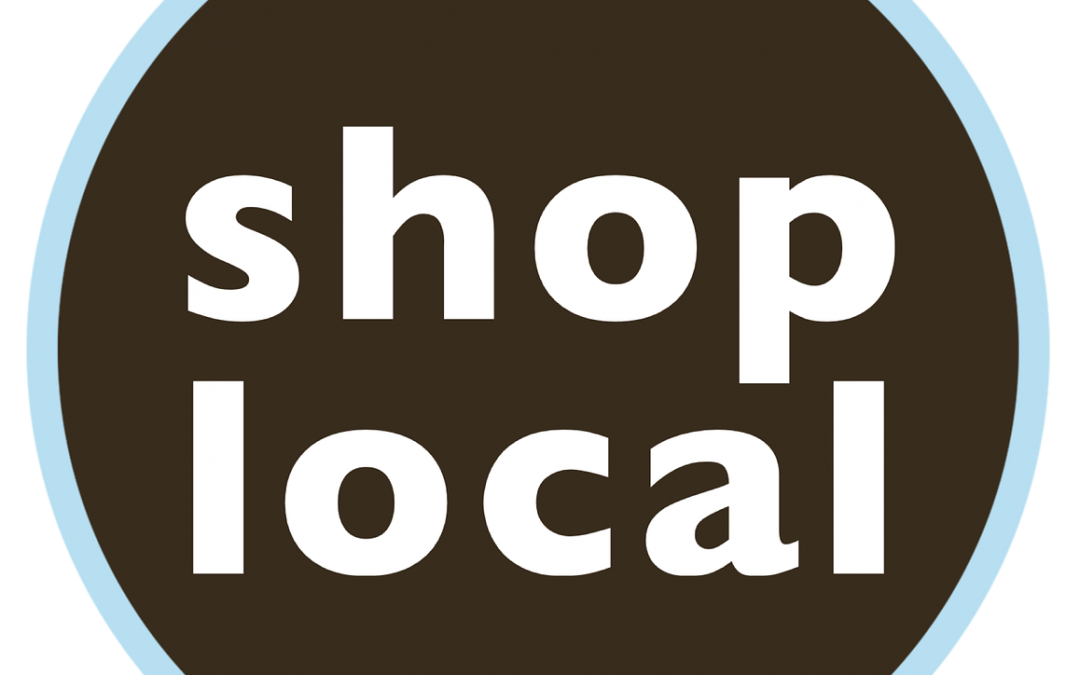
The terms “Shop Local” and “Small Business Saturday” have gained popularity as people acknowledge the benefits of choosing their independent, locally owned shop instead of a large nationally-business Supporting small businesses helps stimulate your local economy. The money you spend is often being put back into your community. Locally owned shops and restaurants make your city and town unique, chains can be anywhere, but many independent businesses are one of a kind. Choosing a local coffee shop or bakery over Starbucks and Dunkin’ Donuts helps gives business to a small business owner, helping them stay in business and not run out of business by a large corporation or chain.
Why Restaurants Choose Local Businesses
Fresher Foods
Fresh foods taste better. Restaurants can choose to get their meats, seafood, cheeses, and produce from local farmers and suppliers rather than purchase from nationally owned suppliers that have to ship the goods over thousands of miles. It may not be possible for every ingredient and requires seasonal menu offerings, but the taste and local support cannot be beaten. Meals in the US take around 1,500 miles to get from the farm to the customer’s table (https://cuesa.org/learn/how-far-does-your-food-travel-get-your-plate).
Premium price
Customers are willing to pay a premium price for locally sourced and sustainable goods (https://lib.dr.iastate.edu/cgi/viewcontent.cgi?article=2347&context=etd). Foods labeled as organic and local are seen as tasting better by consumers (https://www.theguardian.com/lifeandstyle/wordofmouth/2014/apr/22/local-seasonal-produce-taste-better). Local produce can travel at peak ripeness, as they are traveling shorter distances. Local farms and butchers may charge higher prices, but customers are willing to pay more too. Local farms are more likely to offer organic produce, meats, and cheeses, which customers enjoy.
Marketing
Restaurants can use local sourcing as a marketing tool. Customers enjoy businesses that support other local businesses. Farm-to-Table is a newly coined term for restaurants that use local farmers and butchers to supply their ingredients. Local food can feel more authentic and give customers a unique experience, especially to out-of-towners.
Eco-Friendly
Customers are able to get altruistic fulfillment through choosing a menu item or restaurant that supports local businesses; they feel like their dining choice has rippling positive benefits. Current food trends lean towards health and sustainability. Organic menu offerings are seen as healthier and more environmentally friendly. The National Restaurant associate found that 34 percent of customers felt organic or environmentally friendly food was an important factor for restaurants (http://www.restaurant.org/Manage-My-Restaurant/Food-Nutrition/Trends/6-strategies-to-integrate-locally-sourced-food).
New Meal Ideas
Local foods are often seasonal, which can lead to new ideas for specials or menu items. Starbucks created a new trend with their Pumpkin Spice offerings that are only available in fall, which is pumpkin season. Seasonal menus can drive sales for certain customer favorites that they know will only be available for a limited amount of time. Seasonal menus also present a marketing opportunity to push new items and specials based on special seasonal ingredients.
Support Other Small Businesses and Build Relationships
You may be surprised to find better deals and discounts when doing business with other small businesses. Free food, leads, and positive word-of-mouth goes a long way with local business. Needing a new website? Try using a local graphic designer and web builder. They may be willing to lower their price if they can advertise on your website and if you spread the word to other restaurant and businesses that could use their services. Instead of choosing a large corporate point of sale company, customer loyalty, online ordering, or digital signage, use a local business. Local businesses can usually offer better prices, customer service, and reliability. When you need customer or tech support, you can connect with a real, local employee (who probably knows you by name) and be given top priority.
You are never just a “number” to a local business, you are part of the family. They value your business and will to go the extra mile to make sure you are happy. Large national companies are not able to give customers the one-on-one attention that small, local businesses can. You can cultivate relationships within your community, giving mutual support, spreading positive word of mouth, and referring leads. Local independent businesses provide an experience and customer service that national businesses often cannot compete with.
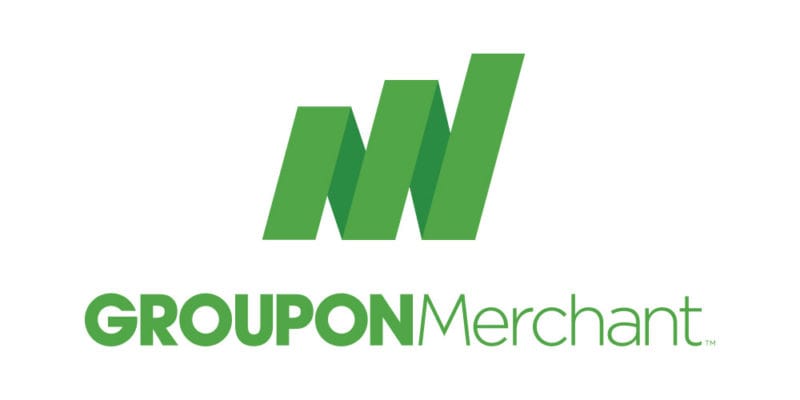
Groupon is a marketing tool that businesses can use to get customers in the door. Groupon is seen as a trusted service, where users can purchase a deal for a particular restaurant, cafe, bowling alley, or any small business. Should you use Groupon to market your new restaurant? What are the pros and cons of Groupon? Is Groupon more effective than Google Adwords or Facebook advertising?
What is Groupon?
Groupon.com is an online marketplace that advertises businesses offering discounts on goods and services. Customers can find “food and drink” deals in their area as well as “things to do.” Groupon connects to potential customers through email marketing as well as their website and mobile app. Most Groupons offer 50 percent off the retail price. What is unique about Groupon is that customers pay upfront. A restaurant could have a deal that offers “$25 for $50 worth of food and drinks.” The customer would pay via Groupon and then receive the gift certificate which they can print out or present the barcode using their mobile phone.
How much does it cost me?
Groupon takes 50 percent of your profit according to FitSmallBusiness. If you’re Groupon was “$30 dollars for $60 dollars worth of food and drink” then you will earn $15 dollars and Groupon will earn $15 every time a customer purchases the deal from the site.
Why use Groupon?
The 50 percent margin may seem steep, but Groupon is a marketing tool, not a sales tool. Business owners in the restaurant industry can use Groupon to get customers in the door. Once you have them at a table, servers can upsell (getting the customers to spend more than the coupon). They may bring friends and if the experience is positive, could become repeat customers or give a good review.
Groupon for Local Marketing
The main sell point of Groupon is the local marketing. The website is designed to show Groupon users deals in their area. Your restaurant will be marketed to people looking for food and drink deals in a specific area. This visibility is great for new restaurants if they are able to handle the very small profit margins.
Pros:
- A chance to upsell and create repeat customers
- Visibility for new restaurants
- Groupon encourages customer reviews
Cons:
- Small profit margins
- Attracts deal-seeking customers
Groupon vs Google Adwords or Facebook Advertising
Groupon can be an easier platform for business owners who do not have marketing experience. Google Adwords and Facebook advertising can be difficult and overwhelming for those who have never advertised on these platforms before.
Groupon also has no upfront costs. Groupon’s profits are only sales-based. Google Adwords and Facebook advertising are pay-per-click advertising services that require a budget upfront and need to be set-up and monitored by the business owner. Groupon handles all of the advertising aspects.
Google Adwords and social media advertising can be better for existing restaurants looking to raise brand awareness, especially for an event, if the business owner has a marketing coordinator on staff or knows how to use these services.
Groupon is a great way for new restaurants, cafes, bars, bowling alleys, and other small businesses to reach local customers without a large upfront cost. There is no marketing knowledge or experience needed, Groupon handles all of the advertising. Groupon takes 50 percent of the profits from each deal and should be used for marketing not sales. Groupon helps get customers in the door, where servers can upsell and create repeat customers.

Free Wifi is a perk that some cafes, restaurants, and businesses offer to customers. Most restaurants already have Wifi to run their point of sale systems. You can upgrade to an affordable small business Wifi plan and offer it to customers. Instead of offering free nuts and candy, businesses offer Wifi as a freebie. Depending on what kind of restaurant you have, free Wifi may be worth offering to customers.
Why offer free Wifi to customers?
It can encourage them to stay longer, hopefully ordering more food and drinks. Your cafe can become a virtual workspace or a meet up for clients, attracting new customers. Students can choose to have a sandwich and a cup of coffee are your restaurant instead of the library.
According to the LA Times (data from consulting firm the Yankee Group)
- “96 percent of respondents prefer businesses that offer free Wifi”
- “79 percent of businesses say it keeps customers happy while they wait for service”
- “64 percent of respondents have chosen a restaurant based on free Wifi availability”
How much does Wifi cost?
Wifi plans are priced by the amount of data used and speed. The prices can also vary depending on the provider. Only some providers will offer business Wifi in your area. A medium sized restaurant will not need the same Internet power as a large office space. Many providers offer small business Wifi, which is more powerful than home Wifi, but less than what a large office or building would need.
Example:
AT&T small business Wifi starts at 60 dollars a month for 100 Mbps Internet speed with a price-lock guarantee of two years. Installation can cost up to a 100 dollars, but you may be able to find free installation with a promotion.
How fast should a small business Wifi be?
According to Quickbooks, 10 users will need 1.2 Mbps, 20 users will need 2.4 Mbps.
Should I make customers use a password for the Wifi?
If you live in a densely populated area, with lots of apartments nearby, you may find moochers. People who live in range of your Wifi may use it if there is no password. If there isn’t many houses or apartments nearby, the chance of moochers is lower. If you find that people are coming in just for the Wifi, you could choose to only give out the password with a purchase.
Facebook Check-in for Free Wifi
Some routers allow you to give customers Wifi access after they have “checked in” to your business’s Facebook page. Facebook check-in can help grow your social media presence and potentially reach new customers. Whenever customers check in at your business, all of their Facebook friends can see it. You can also give a “time out,” only allowing customers to use the Wifi for an hour or two after checking in.
Marketing
Make sure to advertise that you’re offering free Wifi. You can add “free Wifi” to your attributes under your Google My Business page. You can add a sticker to your door, or post about it on your social media channels.
Some business Internet providers offer “splash pages,” which is similar to a landing page. When a customer wants to sign on to your Wifi, they are taken to a landing page where you can add custom content before they are connected. You can offer promotions, coupons, or show an event calendar. You can choose for the Wifi to be password protected or just put a “connect” button that will let them use the internet.
Customers are beginning to expect free Wifi at cafes and smaller restaurants. Free Wifi is also welcome at even larger restaurants and chains. It can encourage customers to post pictures on social media, which is free advertising. You can attract new customers looking for a spot to do work and grab a coffee or a bite to eat. Your restaurant or cafe could be a meetup place for businesses and virtual employees.

Protected by the anonymity of the Internet, customers sometimes write reviews that can be harsher than what they would be comfortable saying in person. Restaurants, cafes, breweries, and other food service establishments can be seen as solely a business, without any thoughts of the people who work at it. Behind every restaurant is the owner, manager, and staff who put their heart and soul into each dish. How do you handle bad restaurant reviews? Should you respond to negative reviews online?
Why Online Reviews Are Important
First, it’s important to be aware of what customers are saying, both the negative and positive. Negative reviews can be disheartening, but are helpful if little changes can be made to improve your restaurant. If multiple customers are complaining that the fries are too salty, try them yourself and see. Customer complaints can alert you to little problems that may have slipped your notice, like unclean bathrooms. Bad reviews can also hurt potential business. New customers who are debating whether or not to dine at your restaurant may do a quick “Google Search” to see what the reviews say. Bad reviews and poor ratings can lead them to choose a competitor.
Where to Find Your Restaurant’s Reviews Online
Popular restaurant review sites are Yelp, Google My Business, Zomato, Zagat, and Trip Advisor. You can also check the comments on your restaurant’s social media page. If you don’t have any social media pages for your restaurant, read why your restaurant needs an online identity.
How to Respond to a Negative Review
It can be hard not to take bad reviews personally. Customers can be rude and your first instinct will be to refute the negativity and defend your restaurant. According to the National Restaurant Association, that’s the wrong move and can make the situation worse. Read the review without the emotions and see if there is any room for improvement. If you’re too emotionally charged, consider having an employee to respond to the customers instead.
Entrepreneur.com recommends responding regularly to customer complaints online. Some sites like Yelp let you choose to leave a public comment or privately message the customer. Polite public responses expressing concern may be more helpful, as it will show other customers that you care, are listening, value their feedback, and are trying to fix the issues. Don’t forget to respond to the positive reviews too!
Yelp’s 3 Things to Keep in Mind as you respond to customers:
- Your reviewers are your paying customers
- Your reviewers are human beings with (sometimes unpredictable) feelings and sensitivities
- Your reviewers are vocal and opinionated (otherwise they would not be writing reviews!)
Negative reviews online can be discouraging and aggravating. Sometimes it can feel like a thousand things can go right, but reviews tend to highlight the one thing that went wrong. Regularly checking online reviews can give a better indication of how customers are feeling, than checking for happy faces and going up to customers after their meal and asking “how was everything toinght?” Many customers feel more awkward voicing their opinion in person, and would rather post negative comments online. Respond politely to reviews (the positive ones too) to show customers you value their opinion and are working on making changes whenever posisble.
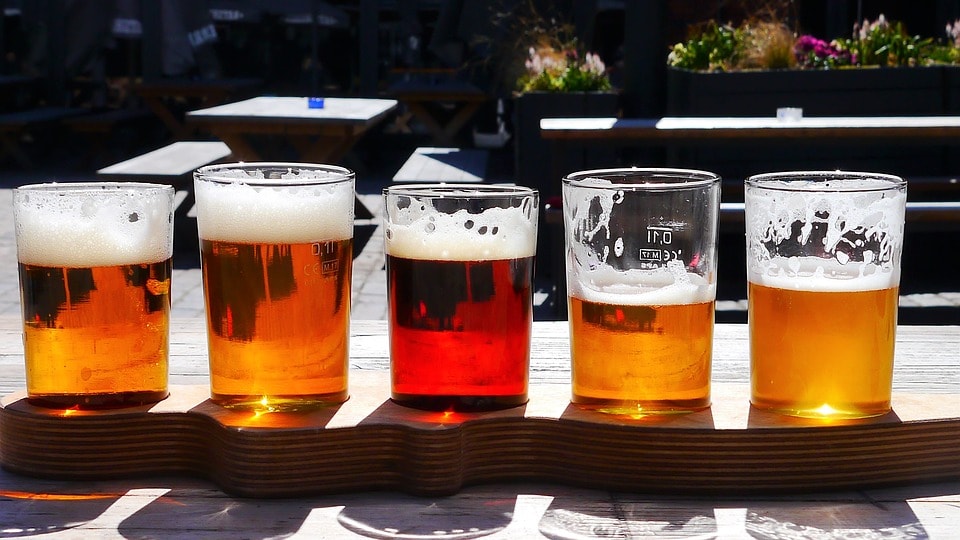
In 2017 people moved away from the bar scene and into the cool and occasionally hipster brewery scene. Drawn to the allure of craft beer, patrons flocked to breweries to relax and play shuffleboard. Deciding on a point of sale system for you brewery can be different process than a traditional bar or restaurant. Choosing the best point of sale system for your brewery depends on what you are looking for, reporting, handheld tablets, or customer loyalty. The right point of sale system will help your team work efficiently, boosting profits, and increasing the overall customer experience.
Brewery Point of Sale Checklist
Inventory
Whether you brew your own craft beer or stock bottles and cans of your local favorites, keeping track of inventory is an important function of your point of sale. Inventory management allows you to monitor product stocks to make sure you never run out of customer favorites. See which beers aren’t selling well and discontinue them to make room for the best-sellers. Easy inventory management is important if your beer list is frequently updating. Be able to add new items and change prices quickly while tracking their success.
Reliability
Can the point of sale system handle your industry? Be realistic about the conditions the system will be under. During rushes beer may spill, and the system make take an elbow or two. An iPad system may seem chic and trendy, but one unlucky spill, hit, or drop could end up costing you 600-800 dollars. Your system should be the last thing you worry about. Don’t be that business that has to tell customers “cash only” and turn away patrons because your POS system or wifi is down. Sometimes you only get one chance with a customer before they head over to your competition.
Reporting
Your POS system should be more than an electronic cash register. Each customer transaction offers valuable reporting information that is vital to your business. Analyze staff performance and schedule smartly. Use this data to take control and make your brewery as efficient as possible. Go beyond spreadsheets and use graphical reporting to give visual representations of your brewery’s performance. Whether you opened your brewery out of business savvy or love of craft beer, understand your business’s cash flow. Give yourself option to create and receive reports remotely. Schedule regular reports and have them sent to your inbox, or if you have a sudden question, create a report from your laptop at home.
Handhelds
Do you offer table service? Handheld tablets can make a huge difference in your business. Servers are quicker and more productive with handhelds. They can input orders at the tables while the customer is speaking, minimizing errors. Bartenders and servers do not need to write down orders or try to keep them in their short term memory as they wait in line at the POS station. Small touchscreen tablets allow bartenders and servers to keep up with the customers and place orders in real time. Faster order input means faster order delivery, which means more profits for your brewery.
Retail
Are you serving just beer and snacks, or merchandise too? Merchandise like shirts, koozies, and decals help spread brewery brand awareness. What about beer to-go? Does your point of sale support a scanner? Don’t limit your offerings!
Promotions
Looking to bring in customers for happy hour? Need to sell the rest of a beer? Run promotions like BOGO or timed discounts like happy hour to attract customers and control your sales. Your brewery POS system should make promotions a breeze. Set happy hour pricing to immediately go into effect at 4pm on Friday. Set and forget. Create different promotions that you can set with a push of a button. Your point of sale system should make your life easier, not harder!
Bonus Features
Digital Signage
Paper menus are becoming passé, especially for the brewery industry. You may have wet tables, changing prices, or beers on rotation, which makes paper menus a major hassle. Digital signage can easily turn any TV into a menu board. Save costs on printers and paper, and use technology to your advantage. Updates your menu in seconds if you sell out of an item or want to run a special. You can also integrate other features like social media feeds, photos, and advertisements to market your brand.
Loyalty
It’s 2018, paper punch cards are a thing of the past. Your customers want to be rewarded for their patronage in unique ways. Check your wallet, how many paper punchcards or loyalty cards have you kept over the years? Customer rewards have turned digital. Loyalty programs are becoming web or app based. Give your customers tailor rewards. Why give the same reward to a customer that comes once a month and orders one beer and the customer that comes every Friday and Saturday and buys multiple beers? Modern customer loyalty isn’t just for customers. Digital loyalty programs allow you to use your customer data for marketing and to help understand your demographics. Communicate with your customers using text message or push notifications. Send them promotions, coupons, or information on events and specials right to their phones.
Choosing a brewery point of sale is an important decision that has a dramatic effect on your business’s efficiency and profits. Make the most out of each customer transaction, using the data to understand your business from every aspect. Make sure your brewery point of sale supports all of your business’s need and allows you to grow.
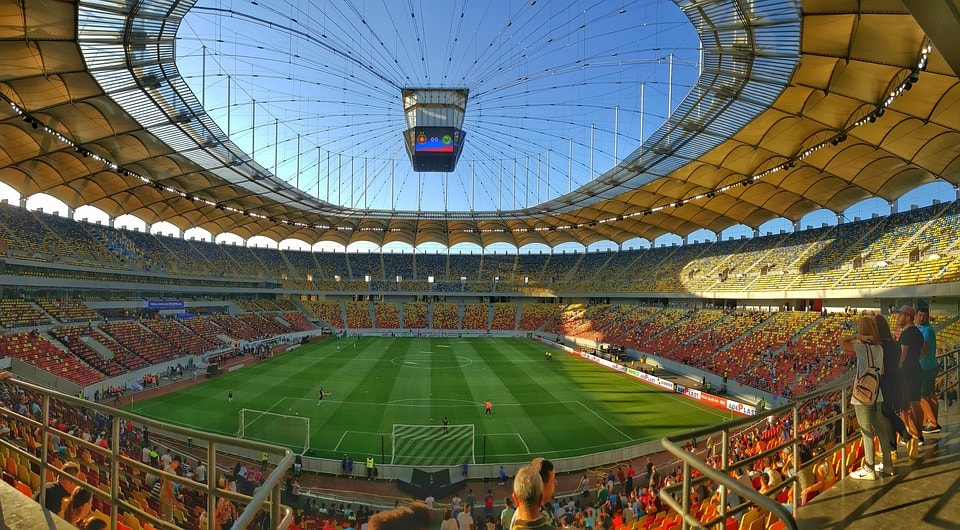
When you’re watching a show or game, the last thing you want to do is get up and go stand in line at the concession stand. Every minute you spend waiting for your food and drink, is a minute taken away from the event you paid to see! You could wait for intermission, like everyone else, but the lines become so long, it’s often not worth it. Wouldn’t you rather use your phone to order and have it delivered to your seat or skip the line at concession? 87 percent of people would! In seat ordering increase profits for venues like stadiums and auditoriums.
Widen the Sales Window
In seat ordering allows customers to place orders on their smartphone or using a tablet. Without in seat ordering, most concessions are limited to the 15-30 minute intermission or halftime to make their sales for the event. Customers are put off by the long lines, congestions, and inevitable waits as the kitchens are overwhelmed during this short window of time. At sporting events, 42 percent of people are discouraged from ordering concessions because of the long lines. Mobile ordering allows customers to place orders in their seat, and the food is either delivered directly to them, or they can skip the line at concession and pick up their food. They can pay directly through the app, so there is minimal waiting involved.
Increase Customer Experience
Stadiums are loosing fans, as 57 percent of people rather watch the game at home rather than going to the stadium. Fans go to see events like plays, concerts, and sporting events live because of the experience. Is typically not the cheapest option, but it is an overall better experience to most. Customers are not able to have the full experience with food, beverages, and retail because of the long lines and inconvenience of missing part of their event to go wait for their food. In seat ordering allows customers to make the most out of their event.
Customer Retention
In seat ordering can be combined with loyalty to engage customers and focus on retention. Each time a customer puts in an order, they can earn points to redeem for future purchases. Mobile loyalty apps allow you to connect with customers, and send them information like coupons, discounts, and information directly on their phone through push notifications or text message (SMS). You can use customer data to get a better look at demographics and spending habits, which can help with future marketing campaigns.
Maximize Revenue
The right point of sale system integrates the in seat ordering and loyalty information for data collection. Reports allow you to take control of your business, and use analytics to maximize efficiency. You can easily see which items are best sellers, to make sure you don’t run out, and get rid of other items that do not perform as well. Customer information is saved and can be used for marketing campaigns and communication.
Repeat Sales
Concession stands are notorious for long lines that frequently make customers have to choose between watching their event or having a snack. Mobile and in seat ordering allows customers to make multiple purchases throughout the game. The main sales window is expanded beyond the short intermissions. Customers do not have to deal with lines or waiting, which encourages spending.
In seat ordering is the modern way to enhance the customer’s experience at your venue. Loyalty can be integrated to increase customer retention and engagement. Comprehensive reporting lets you make the most out of your event, maximizing each seat’s potential revenue. Customers do not want to wait for their food and miss any of the action. They do not want to be crowded and congested during intermission or half-time, to try to put in their order before their even starts back up. The inconvenience is leading customers to for-go their snacks and sometimes even the entire event. In seat ordering focuses on bettering the customer’s experience while making the most out of the data.
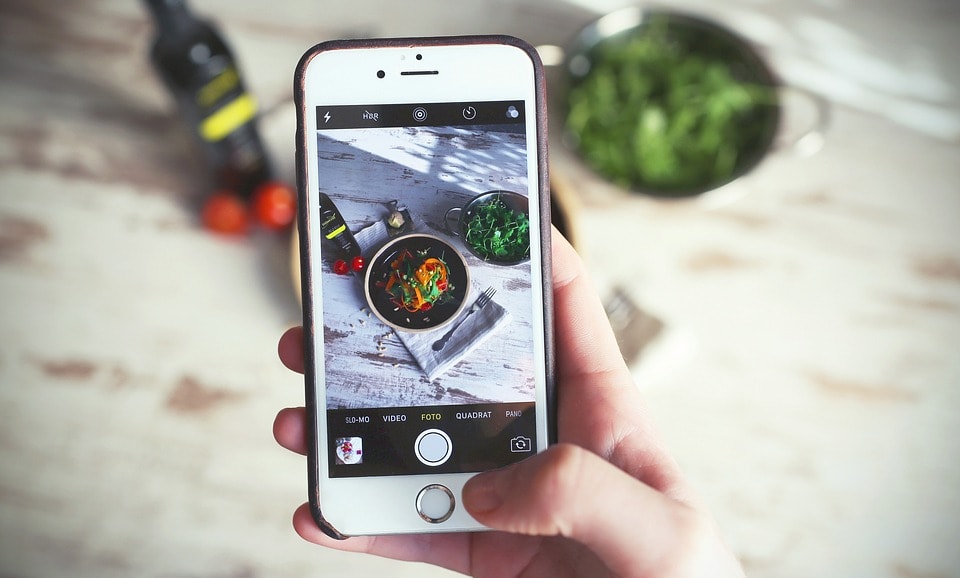
Influencer marketing as one of the marketing trends to watch out for in 2018, according to Entrepreneur.com. Influencer marketing is incredibly popular on social media, as it is easy to track the influencer’s popularity through followers and post engagement. Top influencers, like celebrities, can get up to half a million dollars for one post. Nielsen found that 92 percent of people trusted an influencer more than a traditional advertisement or celebrity post.
What is an Influencer?
An influencer is someone who has an above-average amount of followers on their blog or social media channels. Influencers have a specific niche like food, or even more speck like pasta or ice-cream. Influencers are trend setters, and their opinions are weighted heavily. If the influencer likes your restaurant, hotel, or cafe, their followers will be itching to try it! Influencer’s followers are interested in the particular niche, making them a perfect target audience for companies. Micro-influencers have anywhere from 1,000 to 50,000 followers.
What is Influencer Marketing?
Influencer marketing involves paying an influencer or giving them something for free, in exchange for a review or a social media post involving the product. This post is considered sponsored, and has the potential to be viewed by all of the influencer’s followers. If you choose the right influencer, you can reach new audiences in a more effective way than traditional social media marketing. A successful influencer post can cause a spike in followers too.
 This post by Chrissy Teigan (with John Legend) may have been a sponsored post. It was posted before celebrities and other influencers had to disclose the post as an advertisement. The post had over 150,000 likes and comments. Chrissy may have just been helping a friend, but its more probable that she was offered a free meal and some cash for the post.
This post by Chrissy Teigan (with John Legend) may have been a sponsored post. It was posted before celebrities and other influencers had to disclose the post as an advertisement. The post had over 150,000 likes and comments. Chrissy may have just been helping a friend, but its more probable that she was offered a free meal and some cash for the post.
Influencer Marketing in Hospitality
The hospitality industry is a perfect industry for influencer marketing because it is very visual. Food is one of the biggest topics on Instagram, which is based on photographs rather than text like Twitter. Food blogging has taken off, and there are many different bloggers with varying followings on the scene. You can have a broad blogger who tries all of the foods in an area, or a highly specialized one who travels around the world looking for the “best of” a certain category. Hotels, stadiums, and auditoriums also photograph well and make for great social media posts. It’s easier for an influencer to take a picture with a plate of pasta or in pristine hotel room, than a vitamin or lotion. It also seems more natural because everyone eats and visits hotels, or auditoriums. It seems more genuine then the influencer taking a blatant picture of a product.
Find Micro-Influencers
The first step into influencer marketing is finding your micro-influencers. Kim Kardashian is likely not in your business’s marketing budget, especially for an independent restaurant or cafe. A micro-influencer will be a lot more affordable, and may have a following that’s specific to your restaurant’s specialty or location. You can find these micro-influencers by doing a Google search for the top bloggers in your specialty ex. “Food Bloggers in Orlando,” and read their blogs to see if they’re a good match. You can also search within the social media platforms. If you go on Instagram you can search “Food Bloggers Orlando” and a list of hashtags and accounts will pop up. If you find a relevant blogger, you may be able to find others based on the accounts they follow. Typically the blogging community is tight-knit and many bloggers follow one another.
How to Reach Out
You can reach out to a blogger typically on their blog, through a direct message on social media, or through the email listed in their “about section” on their social media page. Many influencers will say “for inquires please email ___@___.” Always check their social media pages and blog to see their engagement. Likes can be bought, so its better to check their influencer status by seeing if their posts get many likes, retweets, and comments to gage their legitimacy.
Payment
You will be able to negotiate a contract with the influencer if they are interested. If the influencer is still rising, you may be able to offer them a free meal, stay, etc in exchange for a positive review and post. If the influencer is more established, they may want payment on top of the free product.
Is It Worth it?
For the right influencer, absolutely! Your restaurant, bar, cafe, or hotel will be able to reach thousands of potential customers with one post. Influencers are seen as reputable and highly trusted, so the post is weighted more than a regular advertisement would be. Influencer marketing is the new social media marketing, and is only going to grow in 2018. You can jump aboard this trend before your competition catches on!

One of the main keys to running a successful restaurant is customer retention. You want loyal customers coming back for more, increasing their spend, and bringing friends. Loyal customers are worth more than new customers. Loyal customers help spread positive word-of-mouth, by sharing pictures on social media, writing good reviews, and telling others about your business. How do you boost customer retention? Reward your customers, offer a great experience, have a social media presence, create a brand, and offer events and other incentives to come each week.
Loyalty Programs
Rewarding customers is easy with the right loyalty program. You can use points, punchcards, or an app to incentivize customers to return. Points or punchcards can be based on number of visits or spending. A loyalty app is a more modern way of rewarding customers, using technology to offer tailored rewards. All customers are not equal, so why should their rewards be? Should you give the same reward to a customer who spends 100 dollars a week as one who only spends 15? The goals are different. You want the higher spending customer to keep returning and you want to increase the spending of the other. Apps also allow for enhanced customer communication, you can use push, sms, or email to send them promotions or let them know about new specials or events.
Online Reviews
What do your online reviews say? Bad Yelp or social media reviews could be negatively affecting your customers. If you’re reviews aren’t filled with happy customers raving about the food and the experience, potential or existing customers may decide to go to a competitor with better reviews. Even if a customer had a great time, they may think it was a fluke based on the negative experiences of other customers. Online reviews are a great way to see how your business is doing. All customers aren’t vocal, you may not be able to tell a customer is unhappy. Their problems go unseen until post about it. Read your online reviews and make the necessary changes. If your fries are too salty, talk to the kitchen. If your bathrooms are dirty, start having your employees check the bathrooms more regularly.
Social Media Presence
Social media helps restaurants, bars, and cafes connect with customers. You can use visual platforms like Instagram to showcase beautiful pictures of your menu items. Facebook can be used to make event pages and invite your loyal customers (hopefully they will invite their friends). Twitter is great for posting updates like new specials or promotions. You can interact with your customers, let them feel like they know you. Repost their pictures and listen to their comments. You can ask questions, get opinions, and make them feel like part of the “family.”
Create a Brand
Starbucks vs Dunkin Donuts, most people have a preference. Is it truly about the coffee or is it about the brand. Make your business unique, set it apart from your competitors. Give your customers something only you can give them. You could make your business exclusive. Make it the “it” place for date night, any other option is “less than.” Your business could be a close-knit family; offer shirts, name a special after a favorite customer.
Make it fun
The customer experience can be more important than the actual food or drinks when it comes to customer retention. Fun events like trivia, live music, or themed nights can turn customers into regulars. Weekly events give customers a reason to return besides the food or drinks. Exclusive events like a special tasting menu focusing a foreign cuisine or special ingredient can create an experience that encourages retention. If the event is successful, the customers will be looking forward to the next one.
The goal of customer retention is to increase “regulars.” “Regulars” are golden in the restaurant industry. Customers that keep coming back often bring friends, and can be encouraged to increase spend. If your business has “regulars” then it’s doing something right. It’s important to reward regulars to keep them returning.
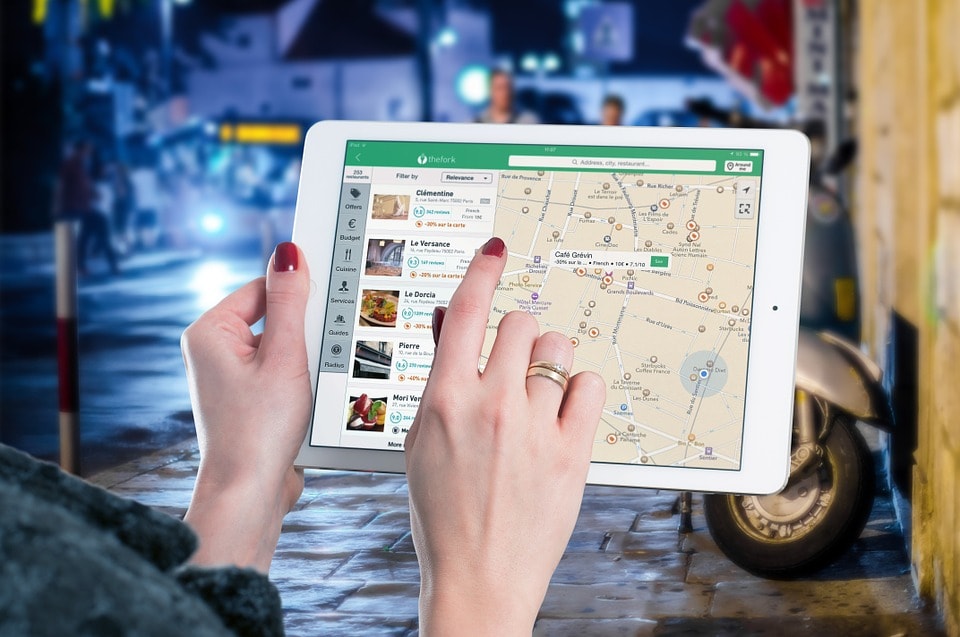
Websites and a social media presence are extremely important for restaurants, bars, cafes, bakeries, and other small businesses. Digital ghosting, lacking an online identity, makes you invisible to customers. Word of mouth has turned digital, and unless you’re in a location with extremely high foot traffic, you need to have an online presence.
Social media is free and easy to maintain, making it a no-brainer. Websites can be a little trickier. Unless you have a friend who can code or work magic with WordPress, building a complex website can be very expensive. Thankfully, most restaurants, bars, and cafes only need a basic website to start out. You can redo your website or hire someone to work on the SEO (search engine optimization) down the road.
Basic info your website needs to start out:
- Address
- Phone number
- Easy to read menu
- Great pictures of menu items
Free Website Tools:
Wix
Wix is a great tool for businesses on a budget and those without website building knowledge. It’s a drag and drop website builder, meaning you “drag” website elements like text, photos, videos, etc and “drop” them on the page wherever you like. You can then easily edit and customize. If you work with WordPress or a different site that isn’t drag and drop, you will have to use code to make changes. Wix is meant for those without any previous knowledge of website building. You can pick a pre-designed template, customized for various businesses ranging from fancy restaurants to cupcake shops. The website you create will be automatically optimize for mobile, meaning it will be easily viewable from a smartphone.
Benefits:
- Customizable Templates
- Menu template
- Facebook and Foursquare menu integration
- Mobile optimized
- Online ordering (receive updates via email or phone call)
- Online reservations
- Can have an online store with the paid subscription
If you want a free site using Wix, you’re URL will username.wixsite.com/sitename/page-url instead of a custom domain (website name) like OrlandoOysters.com. In order to have custom domain, you will need to purchase the name you want and set up a hosting plan. Free sites also show Wix ads.
Paid Wix subscriptions rang from 5$ per month for a basic subscription to 25$ a month for VIP. They often run discounts if you pay for a full year upfront. You still will need to purchase your domain. You can purchase your domain at GoDaddy.com or domains.Google.com. Domains typically cost .99 cents for the first year and then 10 to 15$ per year after that.
Weebly
Weebly is Wix’s most direct competitor. It is also a free drag and drop website builder. The two platforms are very similar. Wix has the upper hand when it templates; it offers more free templates and they tend to be a little nicer. Weebly’s paid services range from 8$ to 25$, making it competitive in price. It offers the same free services as Wix, with a Weebly domain and advertisements.
Benefits:
- Template code can be altered
- Market place for “premium” templates that typically cost around 50$
- Currently if you pay the year upfront, you get a free custom domain for the year
Your restaurant needs a website so potential customers can find you online and look at your menu. Down the road, you can work on your website on your own, or with a company to make it rank higher in Google searches. A restaurant website should have basic info for customers and feature great pictures to encourage them to visit. You can make a free website to start using Wix or Weebly in less than an hour!
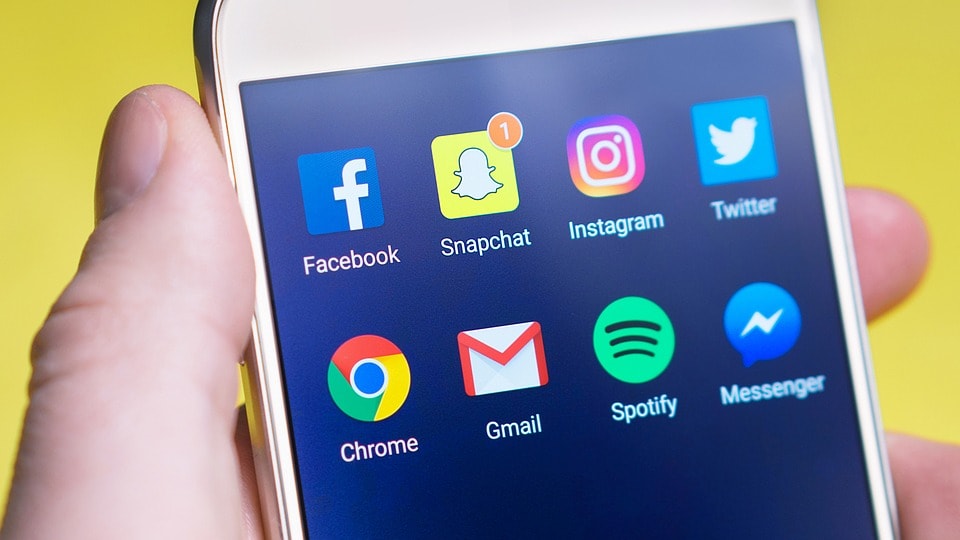
Are you struggling to create buzz about your restaurant, bar, or cafe? Have you fallen behind in the digital age? Word of mouth has migrated to social media, with sharing of pictures and tagged comments. Social media is an essential, free, tool that allows you, as the restaurant owner or manager, to connect with your customers and share mouthwatering photos, new specials, and updates.
According to a study by Trip Advisor, only 17 percent of restaurants have a marketing employee. If you’re like 83 percent of restaurants then the social media is left to you, the owner or manager. You may not have a degree in marketing or even a personal Facebook page, but social media is user-friendly and starting small with some good pictures and updates will increase your business.
What is #FoodPorn?
Foodporn is the popular hashtag used for visually appealing or appetizing photos of food. Social media has changed the way customers think about their meal choices. Some customers want to eat at places they know will lead to great social media pictures. Chefs are having to pay attention to the meal presentation and how photogenic it is. Dillon Burke works with restaurant to make their menu items “Instaworthy.” His firm helps food trends go viral, and helps restaurants keep up with the trends.
What is a social media influencer?
49 percent of consumers seek “purchase guidance” from influencers. Social media influencers have heavy weight in their specific categories. They are seen as “experts” in their particular niche and have a large following. They can create new food trends with a snap of their iPhone or drive business with a good review.
Facebook
Every restaurant needs a Facebook page, especially if it doesn’t have a website (read why your restaurant needs a website). Facebook has a broader age demographic, ranging from young millennials to their grandparents. Facebook is more business focused, and is a great platform for adding business details like hours of operation.
Perks:
- Built in “five star” review system to encourage new business
- “Call now” button so customers can call you directly from Facebook
- Customers can get easily directions to your business on their phone or computer
- “Send message” allows customer communication
- “Popular Hours” shows busiest hours for restaurant
- You can make event pages and invite customers
- Clickable link to website
- Easily add your menu
Instagram:
Instagram is a visual platform, made for photo sharing. It has recently upgraded to videos and live streaming. Instagram is a powerful social media tool for restaurants because it’s all photo-based. The user scrolls through feeds of pictures and short videos with minimal text. It should be updated daily, if not multiple times a day with mouthwatering pictures or cool behind-the-scenes pictures of staff or prep. Instagram is hot with the millennial demographic, who are visual and are more likely turn to social media when deciding where to eat.
Tips:
•Make your photos as professional looking as possible. You can take the pictures on an iPhone, you don’t need a fancy camera. It’s all about the lighting and staging. Read this article for some tips.
•Use relevant hashtags. Your hashtag strategy will depend on whether or not you’re a local business or a large franchise with one social media account for the entire brand. If you’re a local restaurant your hashtags should revolve around local cities, events, and always tag your location.
•Create your own hashtag so customers can tag you. You can put it in your description and encourage customers to take pictures of their favorite menu items and tag you in it.
•Make Instagram part of your branding. You can use it as a tool to help shape how customers feel about your establishment. You can give a “mom and pop” feel by showing the behind-the-scenes action or a very modern new-age feel with expert staging.
Twitter
Twitter’s claim to fame is its 140 character limit. You can only post short bits of information at a time. Twitter should be used for updates on special and events, as well as photos and videos. Twitter can be updated more frequently than the other platforms because Twitter feeds move quickly. Your customer may follow 1000 different accounts and their feed will be updating constantly. Increasing the number of posts, boosts your visibility.
Google +
Google + isn’t as widely used as some of the other social media platforms, but you should still have an account to increase your search engine visibility. Add pictures, the correct address, hours, and any other information you can so when customers Google your restaurant the information will pop up on the right hand side of the page along with a map. Some of this information may be automatically generated by Google, if you haven’t made your Google + page yet. If you have time, post pictures, coupons, and other updates on this platform, but focus on Facebook, Instagram, and Twitter more.
SnapChat
Snapchat has the youngest demographic of the main social media platforms. It is similar to Instagram, it’s a visual platform. The main feature is that the pictures and videos stay up for 10 seconds or added to your “story” for 24 hours. You can send pictures and videos to a specific user or show it to all of your followers. You can add doodles and take pictures right in the app. It is a little more time consuming but is rewarding for businesses that are looking to connect with younger customers.
Social media can put your business on your map and help your business’s popularity. Taking the extra effort to create social media handles and stage photographs can help reach new customers. There are so many choices when deciding where to eat or drink, businesses are becoming more about their brand. Social media is a important way to brand yourself and show customers why they want to visit your place. Highlight the atmosphere, repost pictures of happy customers and good reviews, take mouthwatering pictures. Run a menu special that features a new food trend. Give your potential customers #FOMO, the fear of missing out.
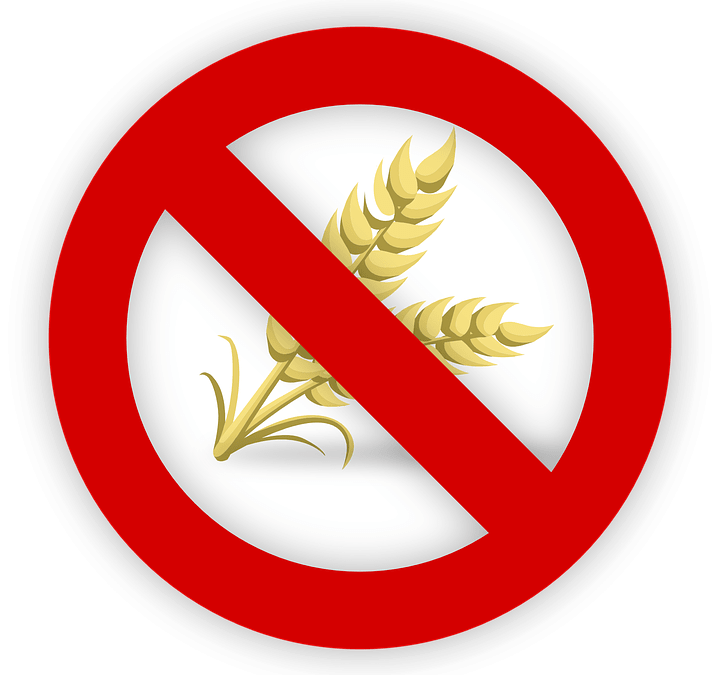
Do you have friends or family members that are gluten free?
It’s becoming growingly more important for restaurants, cafes, and coffee shops to offer items that appeal to those with allergies and special diets. Many people have at least one family member that falls into the “special diet” category, if not more. You could be unknowingly turning away potential customers by not advertising or modifying dishes for customers who follow special diets. Restaurants, including chains and small mom-and-pop shops are offering special menu items and modifications for those with special diets and allergies.
The Gluten Free marketing is growing rapidly. Gluten Free foods are becoming more and more popular for health reason, allergies, and Celiac’s Disease. According to NPR, 1/3 of people are trying to avoid gluten. Menu items can sometimes be made gluten free with a few modifications.
What is gluten?
Gluten is a protein found in wheat, barley, and rye. Some people choose to eat gluten free to lose weight, be healthier, or because they have an allergy. Celiac’s Disease affects around 1 in 100 people, and is an autoimmune disease, that causes damage to the small intestine when eating gluten. A customer with Celiac’s Disease must not have any cross contamination. Small amounts of gluten can cause damage.
Modifications
The National Restaurant Association released a back of house guide for gluten free dining. The guide has many great tips to avoid cross contamination, such as using a dedicated fryer, prep space, and cookware. Education is important for staff. Gluten free can be more than a lifestyle. Your staff should know exactly what gluten is and avoid any cross contamination. For someone with Celiac’s Disease, cross contamination is extremely serious.
Dishes can often be easily modified using gluten free pasta, bread, and dough. Many pizza places like Blaze Pizza and Mellow Mushroom offer gluten free dough. Olive Garden offers gluten free pasta. Chick-fil-A recently announced they will be offering gluten free buns.
Are your burgers naturally gluten free? Could you offer corn tortillas and tortilla chips instead of flour? What about gluten free pasta? These easy modifications could increase your customer base.
Double check your ingredients carefully. Gluten can be sneaky. It can be found in soy sauces (opt for a gluten-free brand, it tastes the same), beer (offer a gluten free one), malt (think malted milkshakes or malt vinegar), sauces and gravies (made with soy sauce or wheat as a thickener).
Label and advertise
Once you know your gluten free menu items, start labelling and marketing them. Typically gluten free is indicated by (GF). You could also offer a gluten free menu, or advertise that you offer gluten free pasta or buns. The National Restaurant Associate overviewed the FDA regulations in gluten free labeling.
There are a few phone apps and websites that help those who are Gluten Free find local restaurants that offer gluten free foods.
• Allergy Eats
• Find Me Gluten Free
• Gluten Free Travel Site
You can also use social media to advertise your gluten free options. Gluten Free is very popular on social media. The Gluten Free community is tight knit and shares gluten free finds all over the world.
Adding Gluten Free menu modifications and labeling will help attract customers you may have be turning away. Many people have a friend or family member who is gluten free. If they do not know your restaurant can accommodate, they might chose your competitor instead for a meal out. If you decide to offer gluten free options, make sure your staff is knowledgable and your kitchen can prepare the foods without cross contamination.
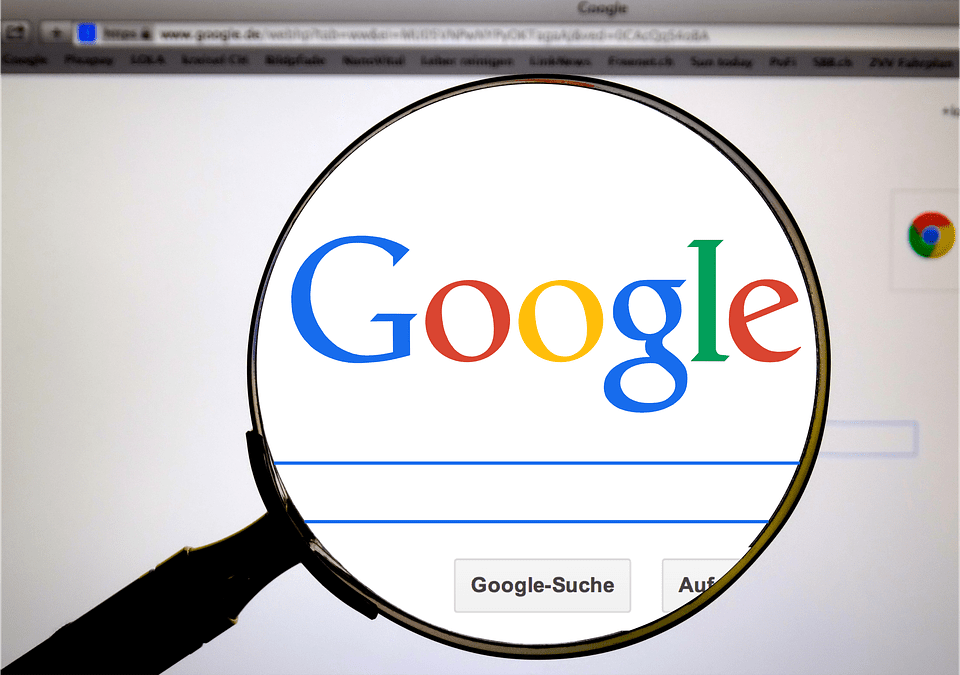
What do people see when they Google your business? Do you have a website? Does it show up on Google? Are there any reviews? Are they positive? How many stars do you have on Yelp!? Do the pictures of your food look good?
Digital Word of Mouth
Before iPhones and laptops became all the rage, restaurants, bars, and other businesses relied on traditional word of mouth to encourage business. They would use coupons, get listed in the Yellow Pages, or maybe put an advertisement in the local paper, but the biggest seller was customers raving about their business to their friends, family, and colleagues. Today word of mouth has turned digital. Customers are turning online when deciding where to go. Online sites like Yelp! let customers publicly rate their experiences. People are trusting other customers more than ads. What motivation does a customer have to write a bad review on Yelp!? It creates a sense of honesty and trust.
Online Identity
Today’s restaurants, bars, and cafes need to have an online identity. Customers are searching online for their next meal. If you do not have a website, Facebook, online menu, or Yelp! page, you could easily be overlooked by your competitor who’s online presence is full of mouthwatering pictures and stellar reviews.
Not all websites are created equal. A bad website that isn’t user friendly or filled with a accurate data can suggest the business isn’t modern enough, it’s not up-to-date with the times. Today’s consumers have become very visually oriented. Millennials want to see drool worthy pictures. They want to check your business’s Instagram, follow you to see amazing specials that are too good to pass up.
Is your website mobile friendly? Most customers are searching for restaurants on the go, using their smartphones. Is your menu too hard to read? Can you zoom in and read the font? Do you label your gluten free, vegan, and vegetarian items? These special customers tend to plan ahead, since they can not eat everywhere. If you’re special dietary options aren’t labeled, you may be turning away potential customers.
Social Media
According to a new Facebook study at least 1/3 of restaurant and bar patrons use Facebook or Instagram. People are influenced by the delicious pictures and positive reviews on their social media feeds.
If the modern person is hungry, they can use the Yelp! app to find the best restaurants, bars, coffees, etc near them. It can be as specific as gluten free muffins or broad like Tacos. When trying a new restaurant, some people like to see pictures of the food, reviews, and even the menu.
Yelp! has become the leader in online reviews for restaurants and small businesses. First time customers want to be reassured they will have a good experience. They check to see how many stars your restaurant has. They look at pictures, read reviews. Does your restaurant have a Yelp! page? Are the reviews positive? Bad online reviews could be secretly hurting your business.
Loyalty
So you have an easy-to-navigate website with some good pictures, a relatively active social media presence, and good Yelp! reviews, now what? Comprehensive and integrated customer loyalty programs are taking businesses to the level. Your customer’s inboxes are being flooded with emails every day from businesses like your own. Your email can easily get lost in the shuffle and sent to spam or left unread. Restaurants can benefit from using SMS (text messages) https://www.modernrestaurantmanagement.com/how-restaurants-can-benefit-from-sms/ as part of their marketing plan. Zonal’s app based loyalty program uses SMS and even push notifications to send rewards, coupons, and marketing nudges directly to their phones
Adapting to the digital age is easy. It is free to create to create Facebook, Instagram, and Twitter pages for your business. Uploading pictures and posting about new specials or menu items takes only a few minutes a day. Quality pictures can be taken with a smartphone and good lighting. Simple websites can be created on sites like wix.com for those on a budget. You want to have an easy-to-read menu, contact information, and great pictures. An online identity is as important as having a sign in front of your business.
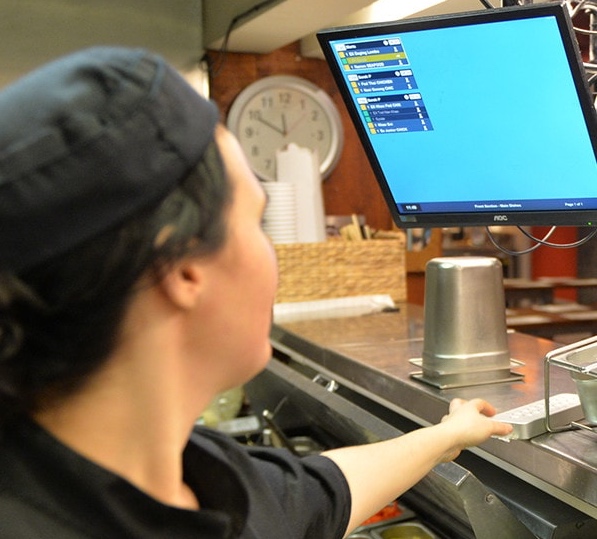
Among the top customer complaints in the restaurant industry are inaccurate orders and slow service. People do not enjoy waiting, especially when they are hungry. Hungry can turn to “hangry” quickly, and lead to unhappy customers. A sandwich cooked too little or too much, or missing cheese, or having cheese, could easily upset a customer, especially when paired with a long wait time.
In the digital age we live in, unhappy customers are more likely to turn to social media sites like Yelp! or Facebook than quietly fill out a comment card to vocalize their dissatisfaction. Not only may they not come back, but their bad reviews may deter potential customers who were reading online reviews to help decide where to eat.
Before the days of the digital POS, cash registers were how customers would pay for their meals. Servers would scribble orders down on a piece of paper and give them to the kitchen. The kitchen staff would have to spend time deciphering the handwriting with all of the various modifications and instructions. When the order was complete, they would ring a bell and yell “order up!” The server would have to pay attention and get to the food before it was cold. This method leaves a lot of room for error.
Once today’s point of sale systems became mainstream, the option sprung up of being able to print tickets. The server would input the orders into the POS, using modifiers and adding instructions, and then print the order, called a “ticket.” This got rid of the need to read scribbles, enhancing the server-kitchen communication. This method is still used today, but is not as efficient as a Kitchen Display System (KDS).
KDS are screens (think computer or TV) that digitally display orders directly from the point of sale, adding a direct stream of communication from server to kitchen. KDS eliminate paper costs and visually display orders. Kitchen staff can more easily keep their heads above water during a rush without having to scramble to read bits of paper.
Zonal KDS integrate with the POS system, making it simple to add modifications and food allergy special instructions. The KDS screens are easily customizable and have color coded options to insure accuracy. Kitchen Display Systems allow for reporting information which isn’t available with handwritten or most printed tickets. Managers can track order times during peak hours and see what needs improvement. It can help monitor the overall efficiency of the restaurant.
KDS are a modern way for servers and kitchen staff to communicate orders to enhance efficiency and accuracy. Customers want their orders to be timely and correct. Kitchen Display Systems are a great alternative to handwritten and printed tickets. KDS takes advantage of technology and integrates with POS to give customers an overall better experience.

Many restaurants, cafes, bars, and even stores are adding handheld tablets to the point of sale. Tablets are easy to hold and give servers and baristas the freedom to take orders at the table or bar instead of the terminal. Tablets are either Android or iOS based and can typically run the same interface as the your other terminals.
Mobility
Handheld point of sale systems allows servers to take orders at the table, saving time and minimizing errors. Customers can have extremely long orders with many modifications, and without a handheld POS, servers have to either remember the orders or spend time writing them down and then imputing them into a terminal. Servers are more accessible as they do not need to go to a terminal, so they can stay on the floor.
Nordstrom introduced handheld POS systems to reduce lines at checkout. Customers can check out anywhere in the store and receive a paperless receipt. A spokesperson for the company, Colin Johnson said the handheld POS take care of customer anywhere in the store. We don’t have to take you to the cash register, and instead, can do that right there with you on dressing room or when you’re trying on shoes – and then you’re on your way…that kind of ability to increase speed and convenience is increasingly important.”
Efficiency
Many POS providers offer both tablet and traditional terminals. A handheld tablet can be an excellent addition, as it can increase efficiency. The tablets can have the same interface as the terminals, leaving no downtime for training and seamless integration. Servers do not have to wait in line to input an order at the terminal. The orders can be sent directly to the kitchen.
Chick-fil-a introduced handhelds to their drive through ordering to help speed up the lines during the lunch and dinner rushes. Friendly employees stood in the drive through lines offering face-to-face ordering while the customer was in line. This helped boost customer satisfaction and efficiency but cutting down the wait times.
Accuracy
Customers speak a mile a minute, and create custom orders and modifications. Servers either have to remember the whole table’s unique orders or spend the time writing it down. Using a handheld tablet, they are able to input the orders quickly, as the customer says them, and then move on to the next table. Checkout can be done at the table, with the card never leaving the customer’s site, this reduces error.
Handheld tablets shave off minutes of ordering which in turn boost profits. The extra minutes can quicken table turnover and shorten wait times.
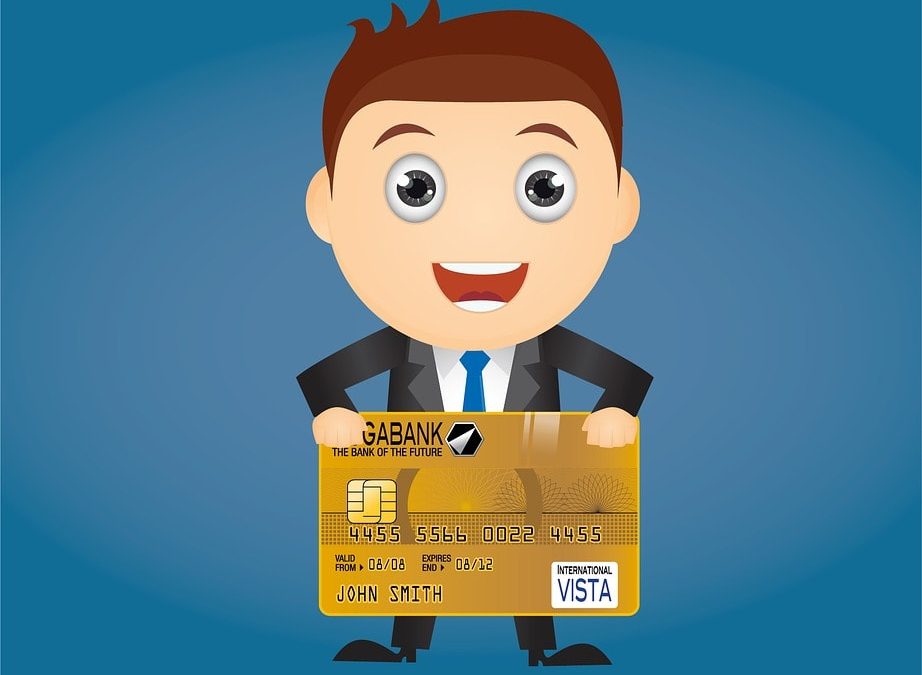
Transitioning to EMV payments
The days of swiping debit/credit cards are becoming obsolete, replaced with the new standard for payment, EMV. EMV stands for Europay, Mastercard, and Visa, the founders of the new “chip card” payment. Many new debit and credit cards are now being created with a microchip in the card, which replaces the magnet strip.
Why EMV?
EMV has become a global movement, which has already taken off and become the standard in Europe, to help reduce fraud and protect sensitive data. The chip card was first used in France in 1992. The United States is one of the last major players to switch over to EMV.
Credit and debit card fraud is a big issue, especially in the United States. Magnetic strip credit and debit cards can be stolen or duplicated with an inexpensive device. The chip in the EMV cards is harder to replicate, compared to the magnetic strips, helping reduce on-site fraud. It creates a unique code for each transaction that cannot be used again, for added security. Even if a point of sale system were hacked, the hackers wouldn’t be able to use the chip cards on file as the unique transaction number can’t be used twice or used to trace the card number.
According to Visa, there has been a “52 percent decrease in counterfeit fraud at chip-enabled merchants in September 2016 compared to a year earlier.” As of the same 2016 report, 39 percent of merchants in the US accept chip cards.
How does this affect your business?
If you haven’t migrated yet, you could be held liable for fraudulent transactions occurring at your business. As of October 1st, 2015, businesses that have not switched to EMV payments can be held responsible for the amount of the fraudulent purchases, instead of the credit card companies. The credit card companies will only cover the cost of the fraudulent charge if EMV payment has been implemented. The EMV switch did not affect liability in regards to data breaches or ecommerce transactions, where the “card isn’t present.”
At the moment the use of EMV is not mandatory; it is incentivized by the liability shift. More places are going to switch over, one day making magnetic strip cards obsolete. Customers used to EMV payments may feel less secure and question businesses that have not migrated over yet.
If you’re a new business looking to choose a point of sale provider, ask if their system accepts EMV payments. Businesses may also be able to integrate an EMV card processor to their existing POS system, depending on the compatibility.
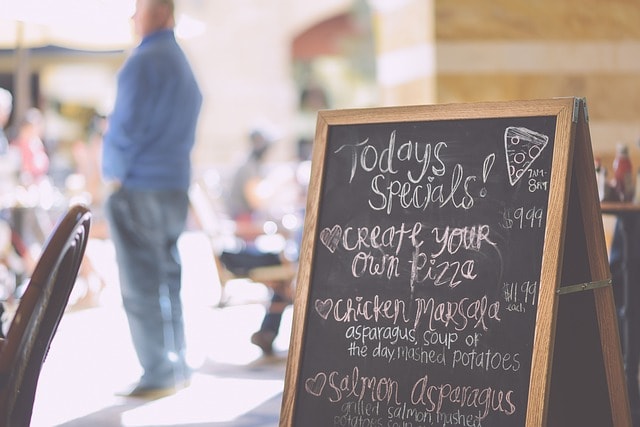
Many places, like restaurants, cafes, and theaters are moving away from traditional paper when it comes to their menus, specials, and advertisements. Instead they are using digital signage.
What exactly is digital signage?
Digital signage is a modern, flexible way to engage customers and patrons. Digital signage turns any screen into a digital canvas. You can create and manage content remotely and then play it on multiple screens in your business.
Before digital signage, if you had a special or event you wanted to push, you typically printed it out on a piece of paper and gave it to clients or pinned up in the bathroom. Customers were given little visual stimulation. Menus were either paper, laminated or put in pricy menu covers to make them last longer. They quickly became sticky and damaged, and offered little flexibility.
Today, digital signage allows business owners to take television screens and display content for their customers to see. Digital signage content can be easily created and updated.
How can digital signage help you?
Menu boards have become increasingly popular, as today’s consumers appreciate visuals. Text is often glanced over; carefully chosen adjectives barely registered in the minds the consumer. Pictures and videos capture and engage the consumer, making their mouth water. A digital menu board can be quickly updated to reflect changes in price and item availability.
Digital signage screens are also multipurpose, you can switch between an advertisements, social media feeds, and live TV. You can schedule content based on the time of day, switch between breakfast, lunch, and dinner easily. Content can also vary based on location, all controlled from your computer.
You can show videos of your latest commercial, stocks, Yelp reviews, and even create a chat with your customers. Digital signage increases communication and engagement. It helps reduce the costs of paper, menu covers, and stands. Many digital signage systems are user friendly and content can be easily created and updated from your phone or computer.
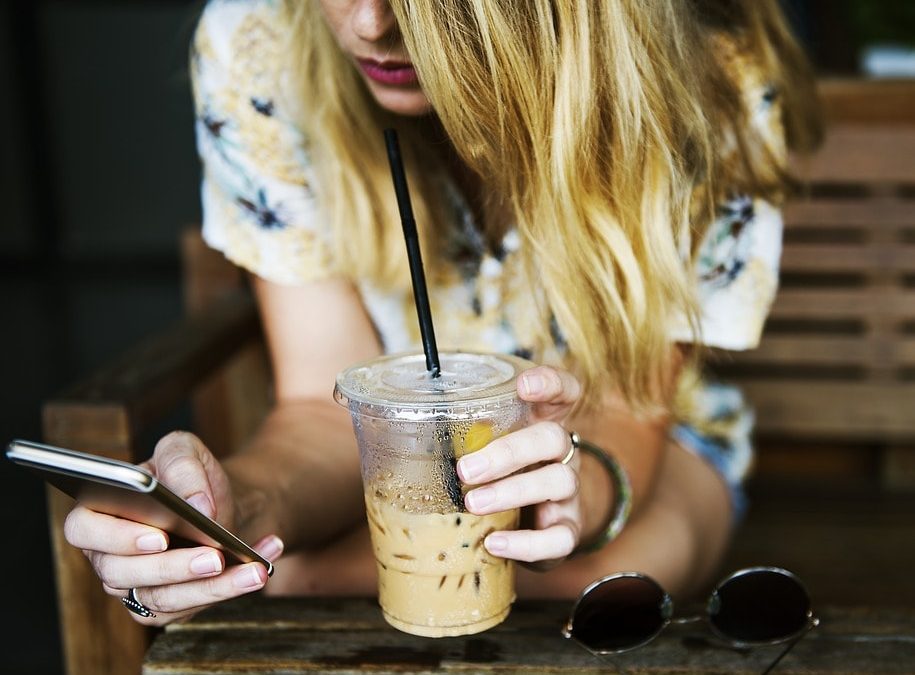
The restaurant industry can be extremely competitive today. On a local level, you are competing with many, potentially similar, restaurants within a few miles. The amount of restaurants even increases in big cities like Orlando. Marketing and a strong social media presence are extremely important, as many customers are turning to the internet first when deciding what to eat, but customer loyalty is the most cost effective way to increase profits.
According to the Harvard Business Review, “acquiring a new customer is anywhere from 5 to 25 times more expensive then retaining an existing one.” This study also stressed the importance of focusing on the right kind of customers.
Customer loyalty when done correctly uses customer data to create strategic rewards to motivate customers to return. Customer loyalty had its commercial start with paper punch cards, easily redeemable and easily forgotten or misplaced. This static form of loyalty didn’t utilize any customer data or offer any sort of customization.
Loyalty programs evolved with airlines having “frequent flier” benefits, and then loyalty cards widely trended in the 90’s. Everyone’s key chains and wallets were filled with various companies’ plastic cards with a barcode. Recently the biggest hitter in the loyalty field was Starbucks, who changed the game. Starbucks was a little Seattle-based coffee company, that rapidly grew, competing with Dunkin’ Donuts and local cafes.
Starbuck’s loyalty program took off when it shifted from being a simple loyalty card to a mobile friendly loyalty program in 2008. Their model was a simple “punch card” method of earning one “star” per visit, with twelve stars equally a free drink regardless of price. Someone ordering 25 dollars worth of drinks would get the same amount of stars as someone ordering a cup of coffee. A mobile app allowed the company to have access to more customer data such as age, gender, location, email, etc. for marketing purposes and analytics.
Starbucks was not rewarding based on spending habits, but rather visits. Should a customer who spends 60 dollars a week receive the same rewards as one that spends 5 dollars every other week? You want to keep and reward the “big spender” while increasing the frequency and spend of the 5-dollar customer. The company received a lot of backlash when shifting their loyalty program to reward based on spending habits. Loyal but low spending customers felt betrayed by the new program and lost their incentive and motivation.
Today’s successful loyalty programs are increasingly mobile based, adapted for both iOS and Android users. They are comprehensive, combining loyalty, marketing, and automation. Customers are automatically segmented based on their spending habits and visit frequency and are given customized rewards. Customers are reached via text message, push notification, and email to stimulate communication and peak interest.


















 This post by Chrissy Teigan (with John Legend) may have been a sponsored post. It was posted before celebrities and other influencers had to disclose the post as an advertisement. The post had over 150,000 likes and comments. Chrissy may have just been helping a friend, but its more probable that she was offered a free meal and some cash for the post.
This post by Chrissy Teigan (with John Legend) may have been a sponsored post. It was posted before celebrities and other influencers had to disclose the post as an advertisement. The post had over 150,000 likes and comments. Chrissy may have just been helping a friend, but its more probable that she was offered a free meal and some cash for the post.








